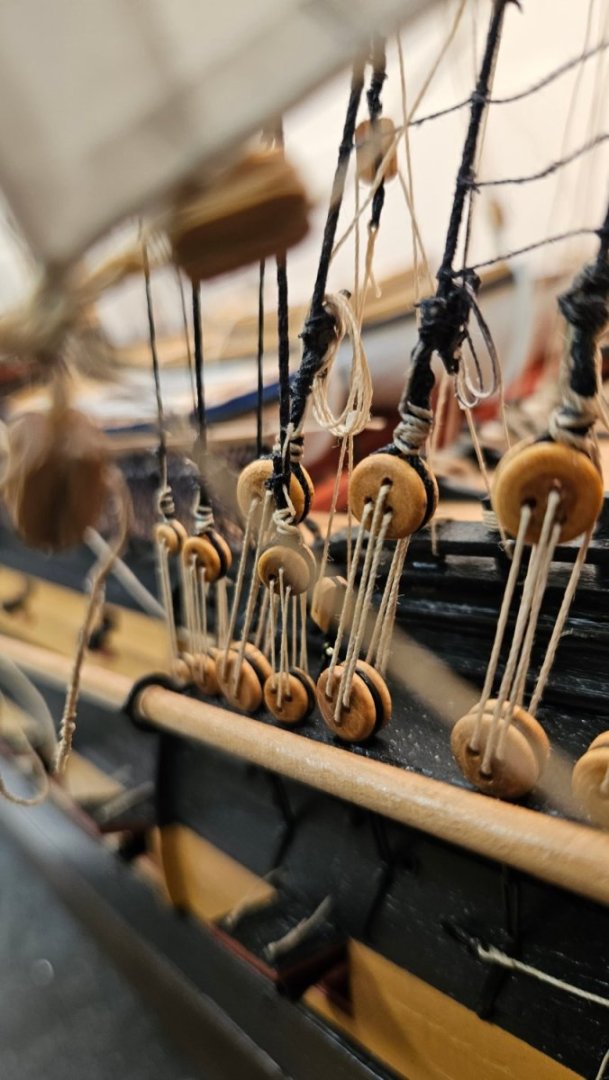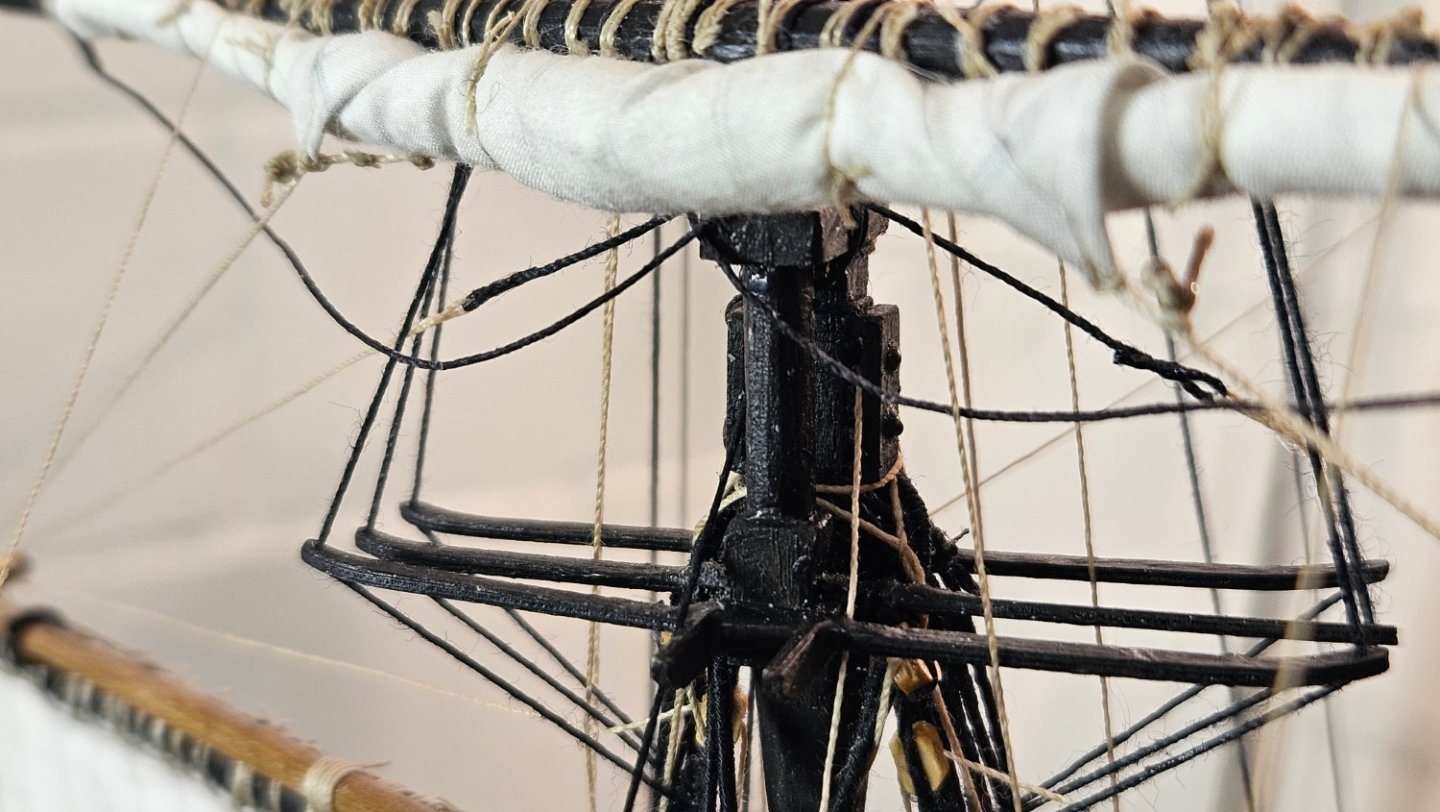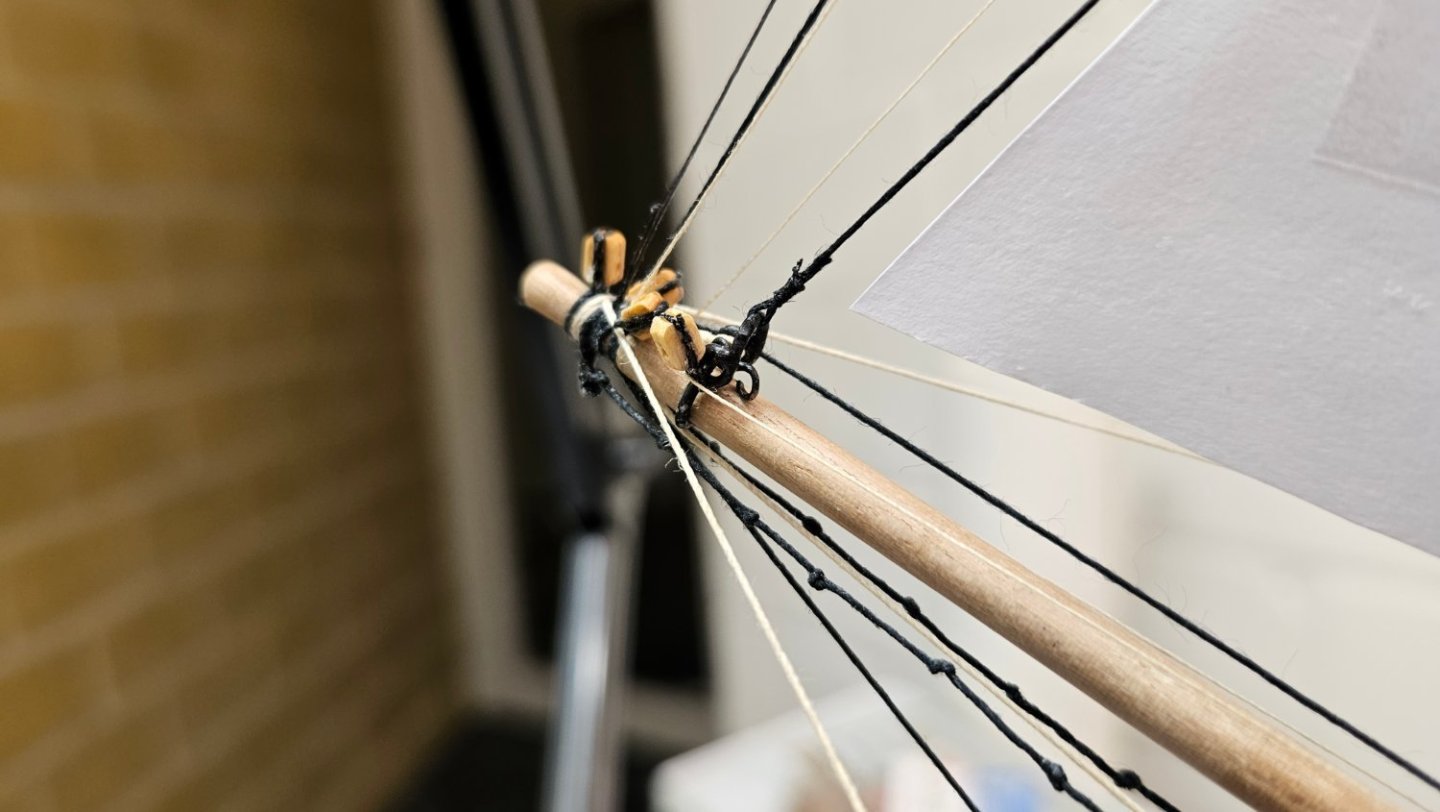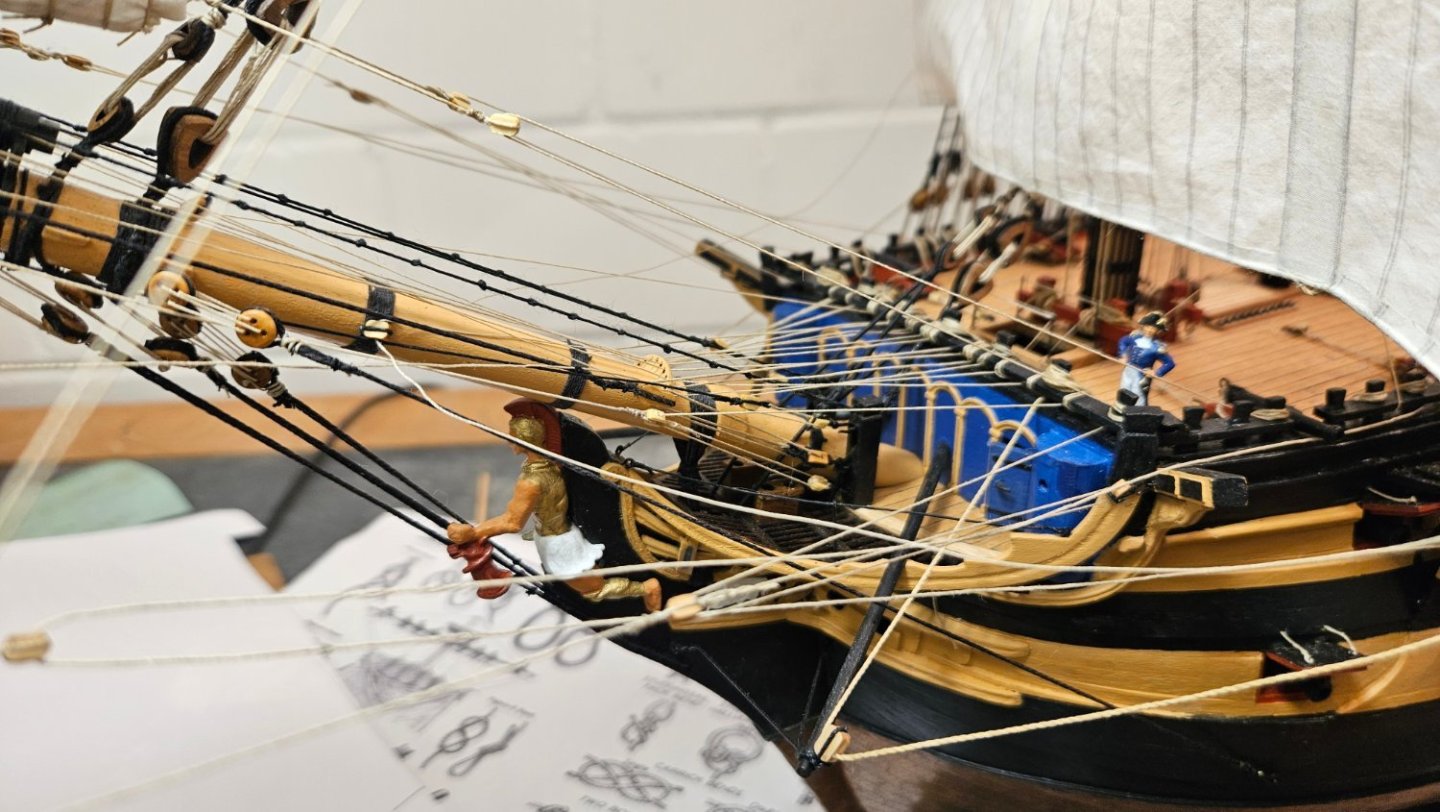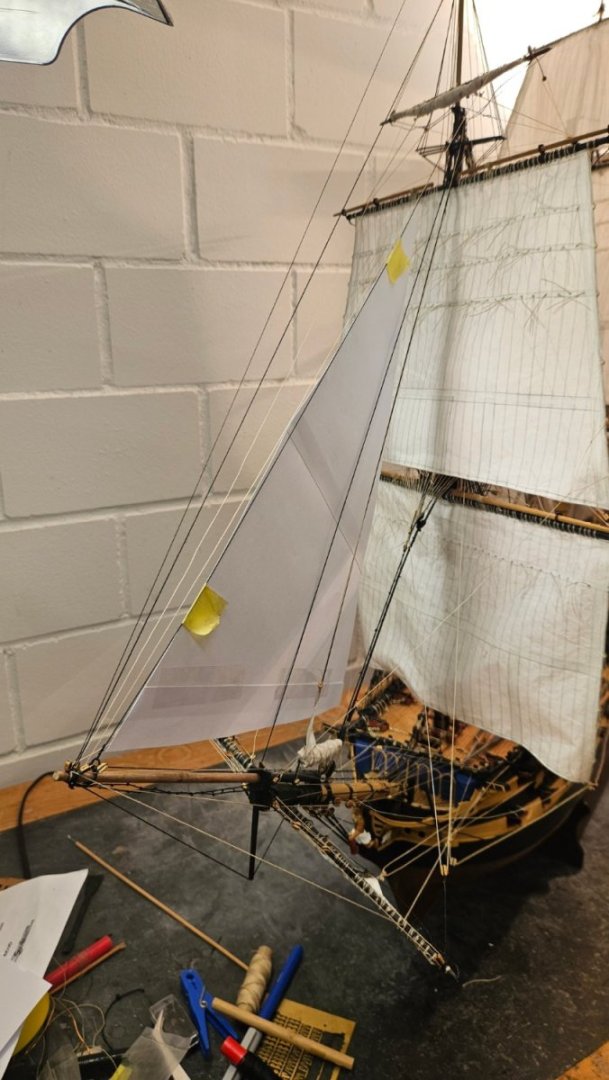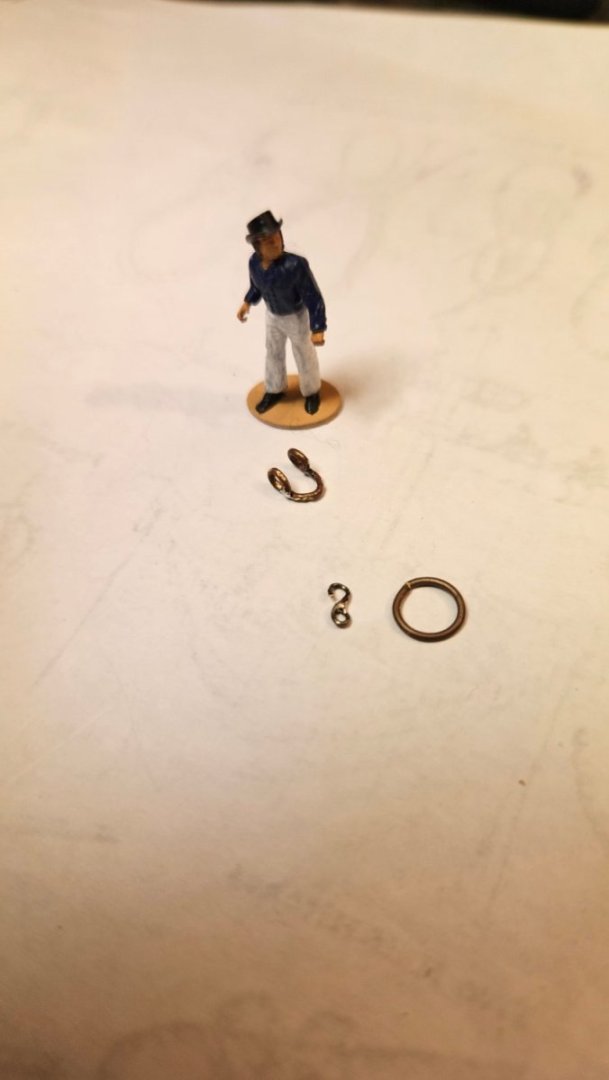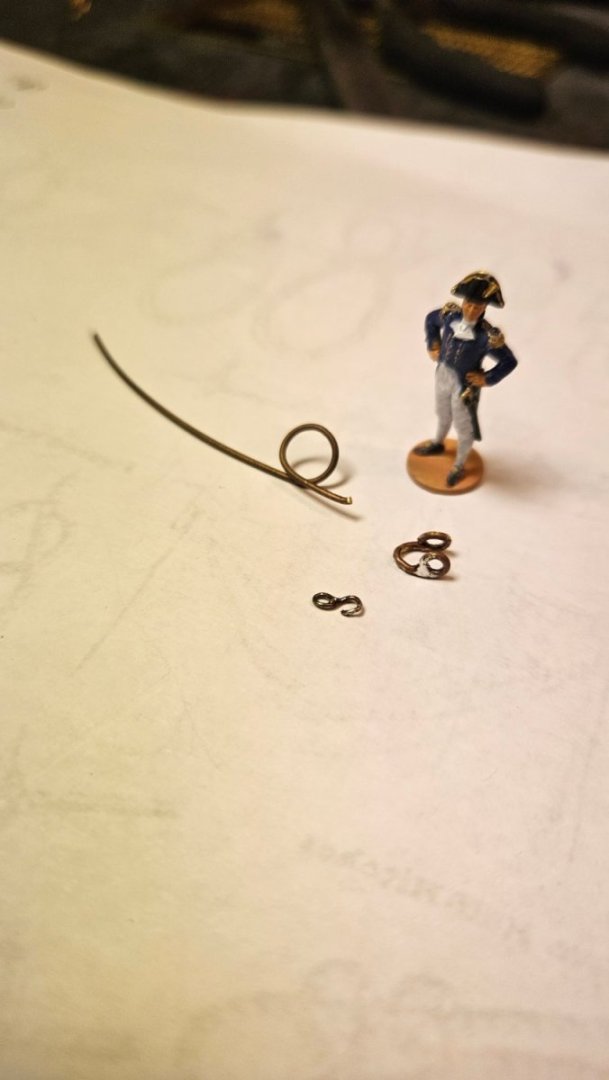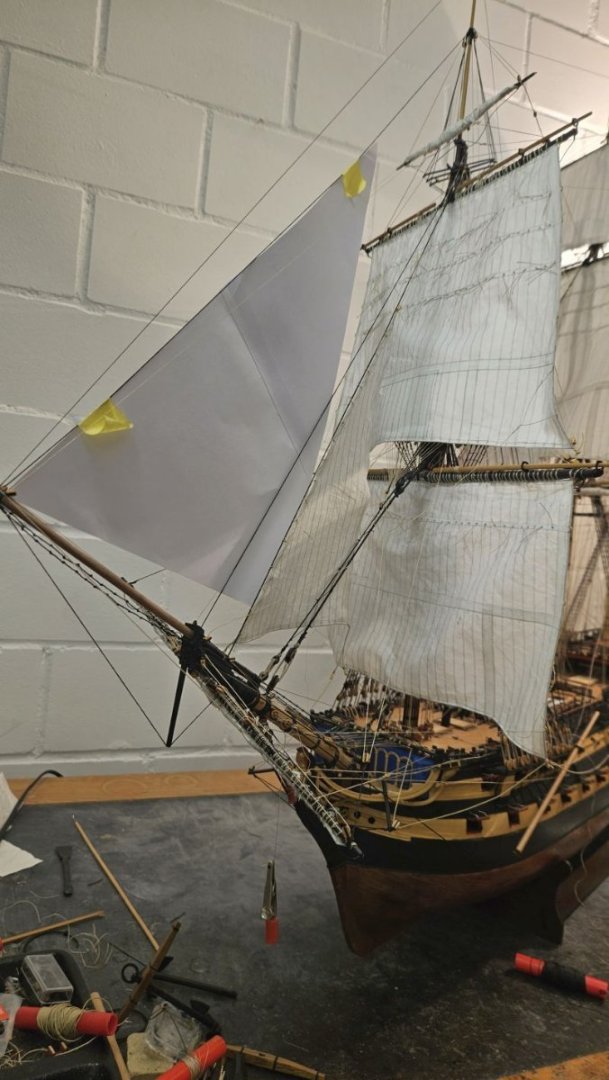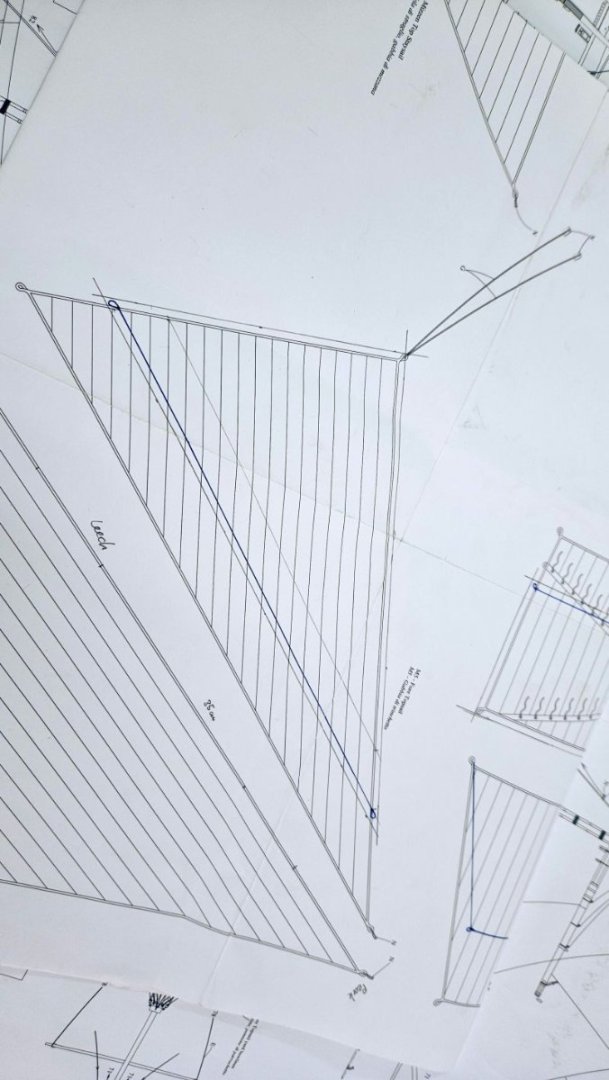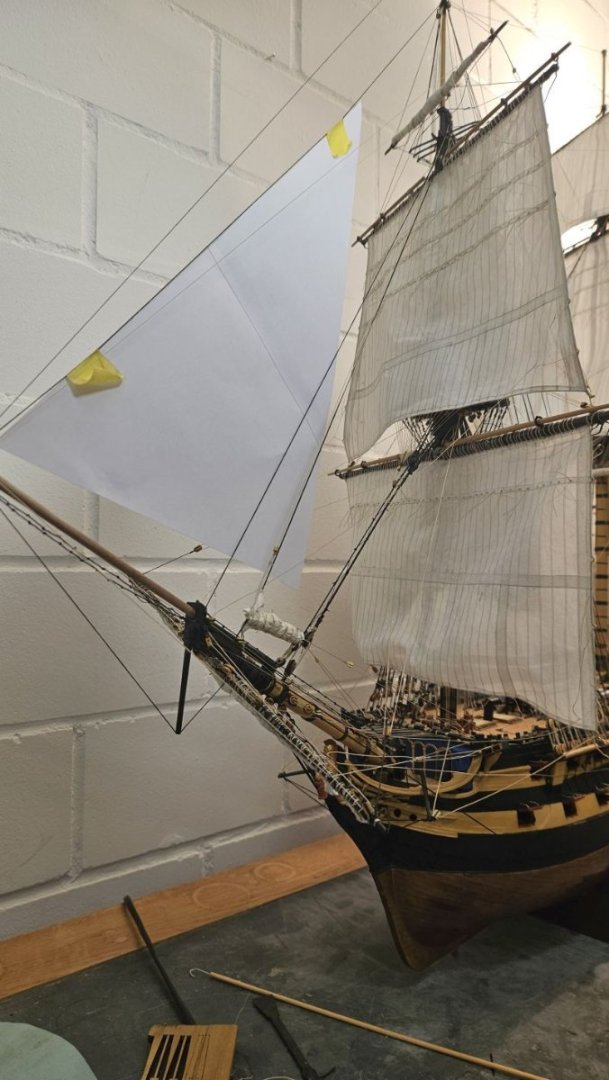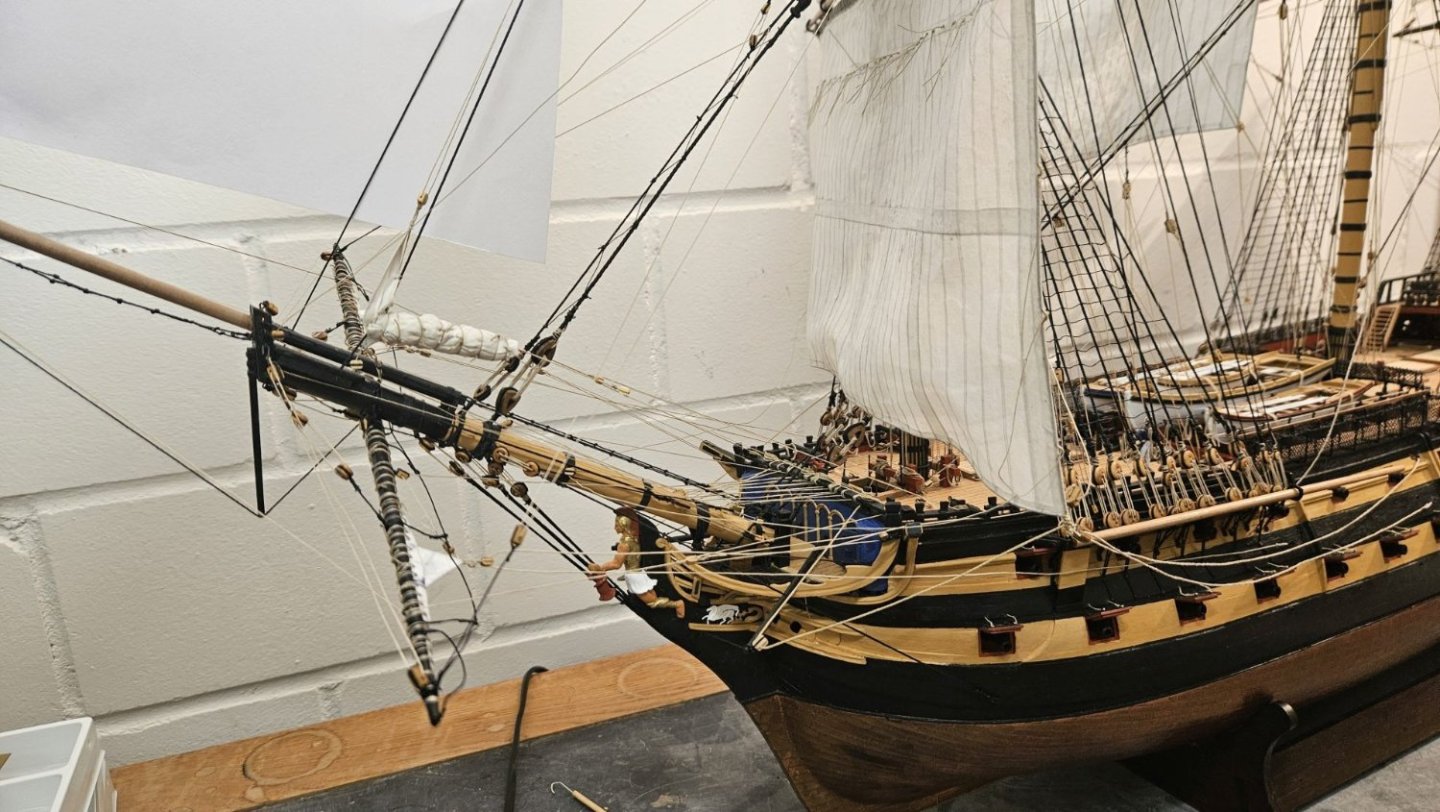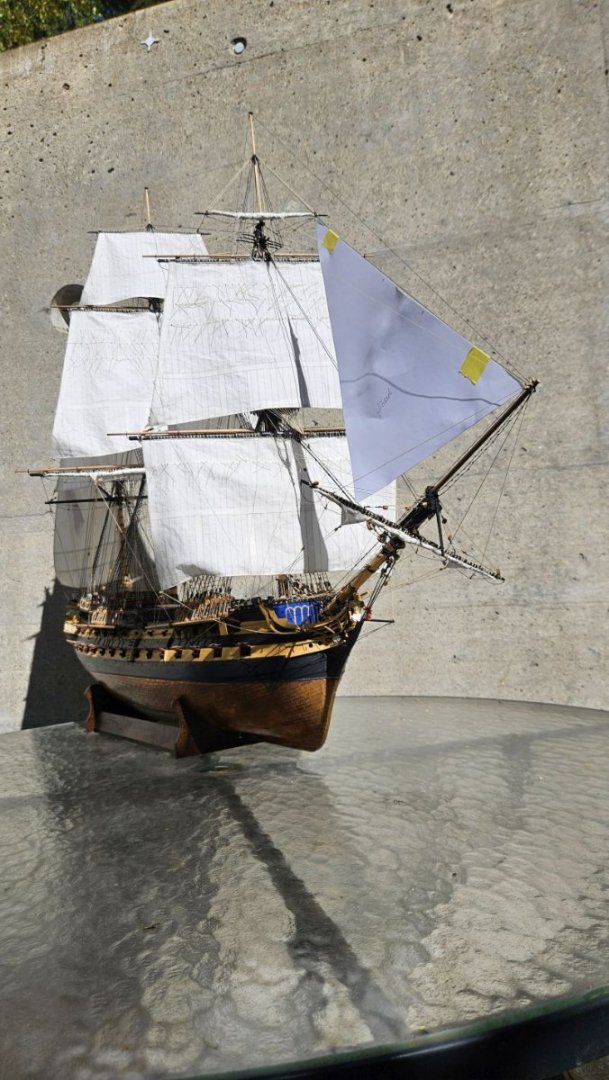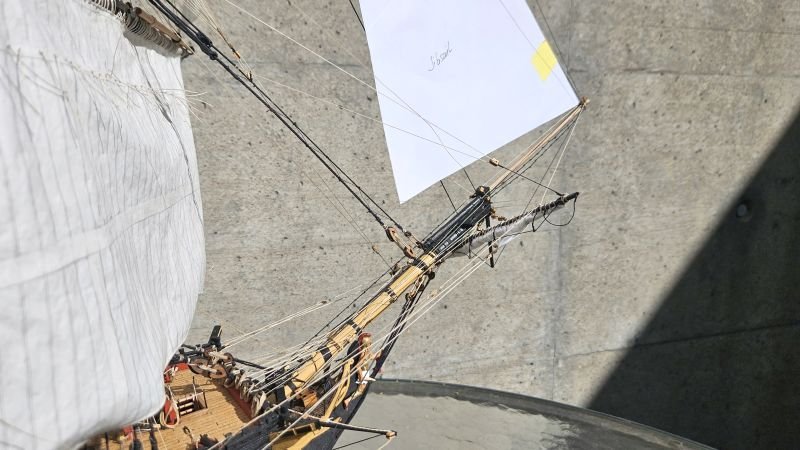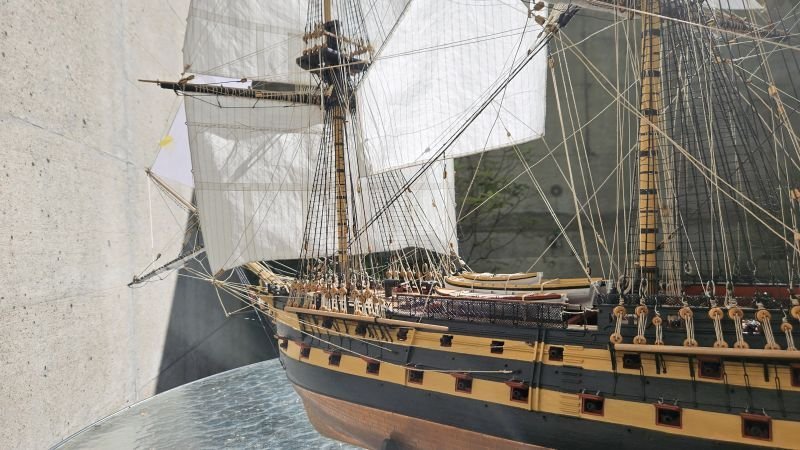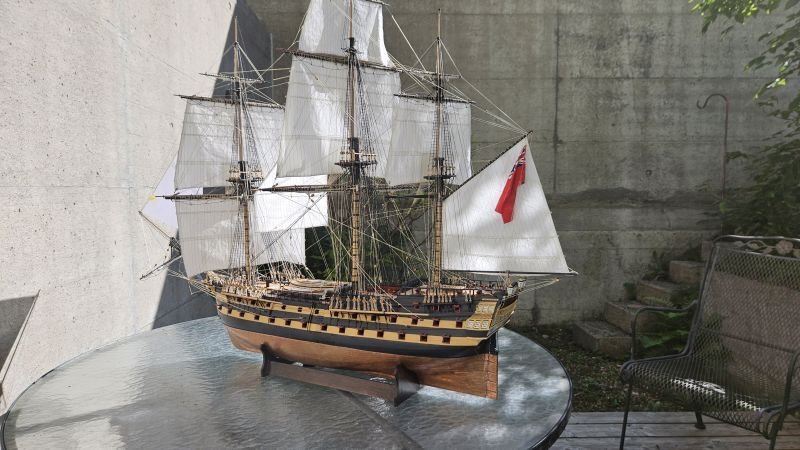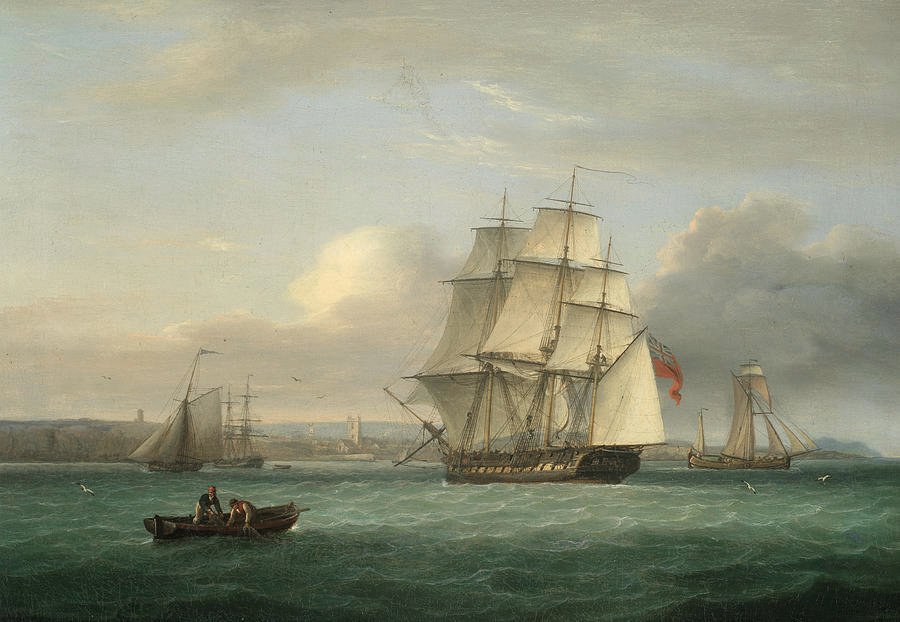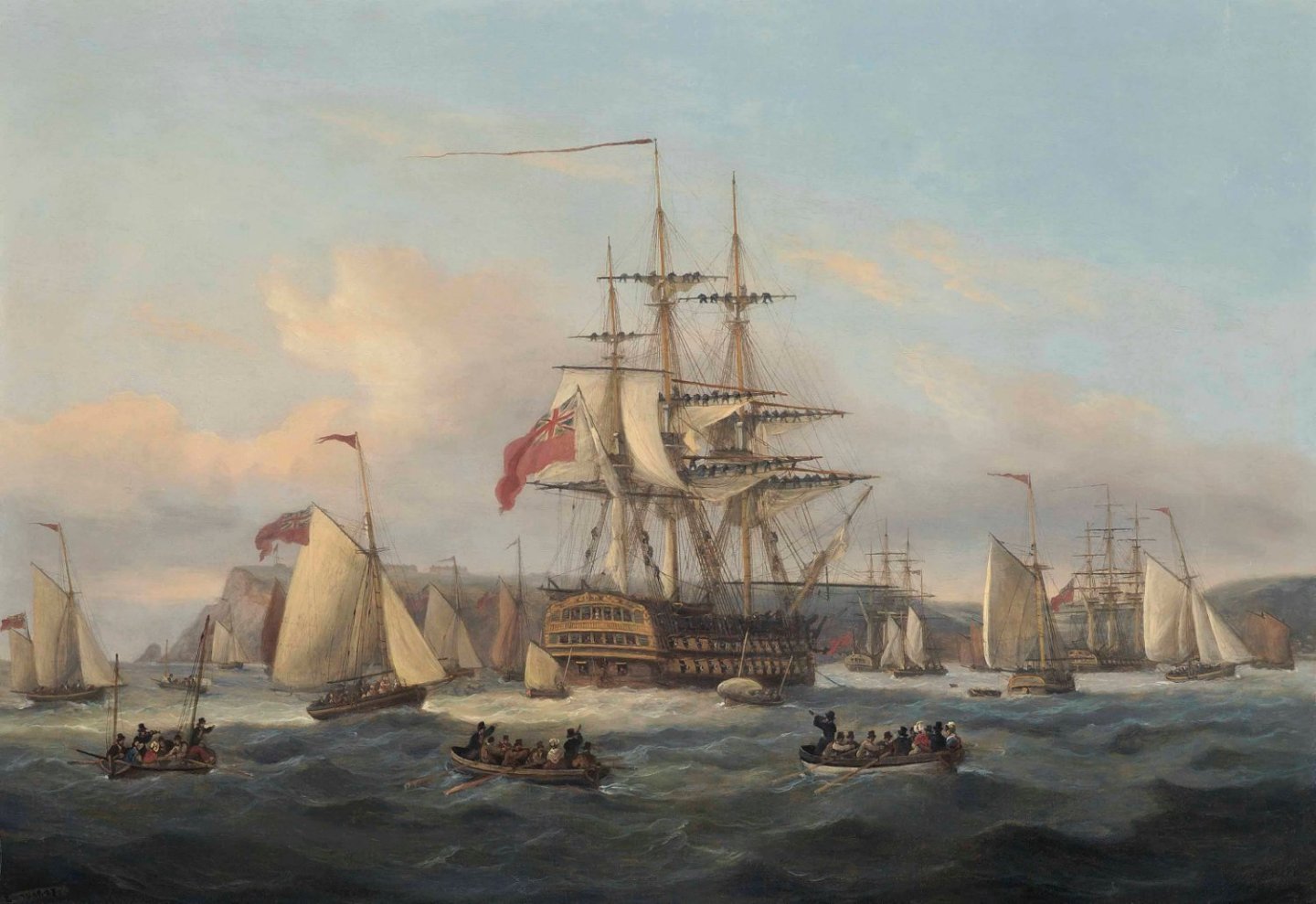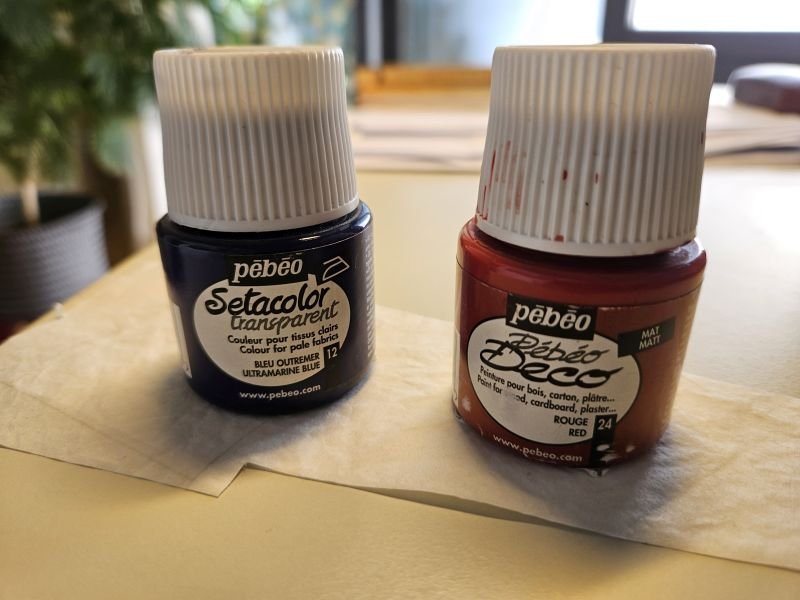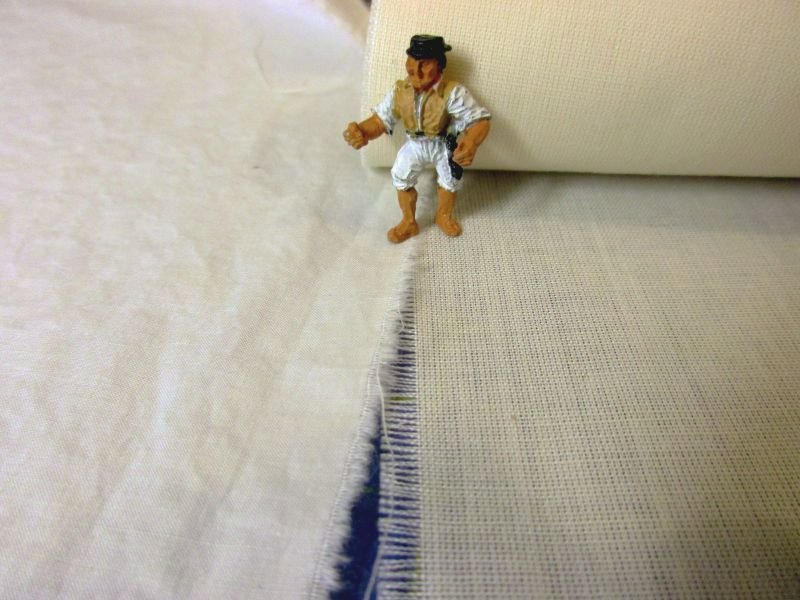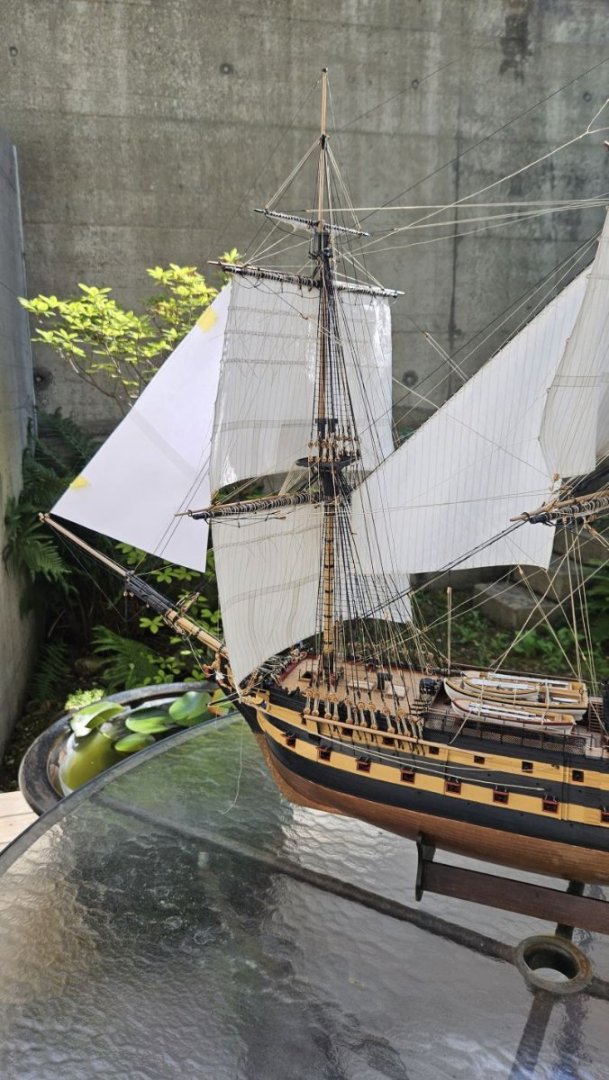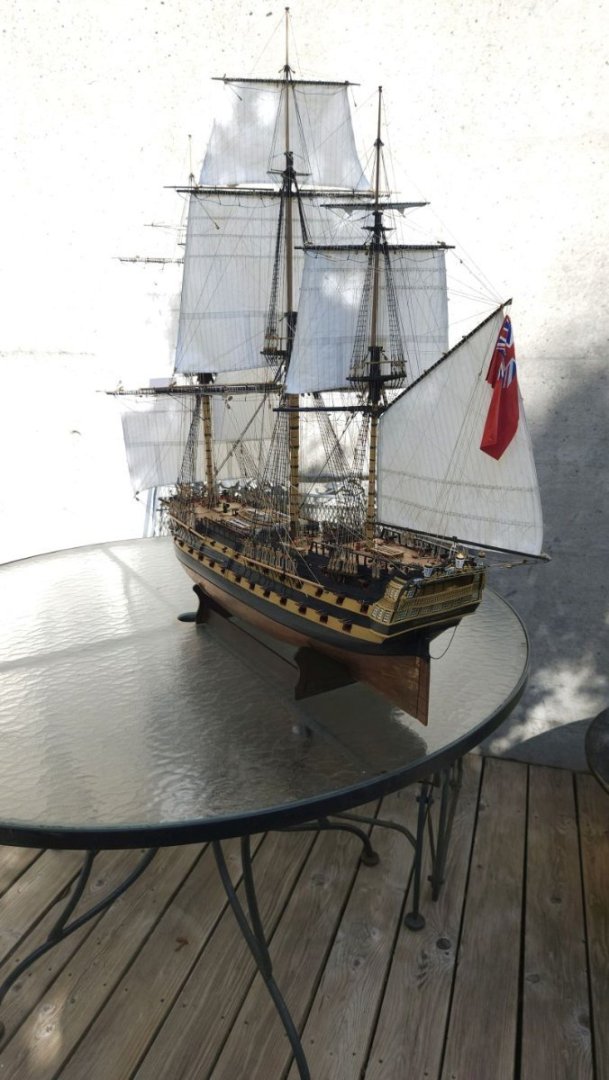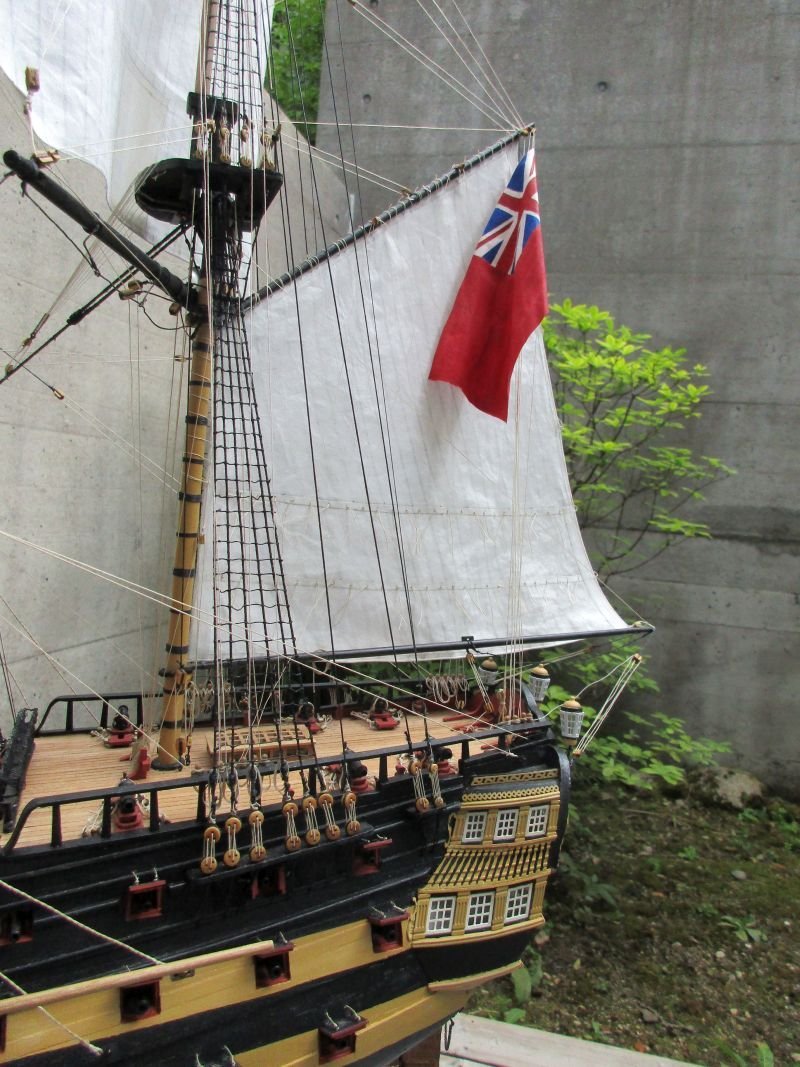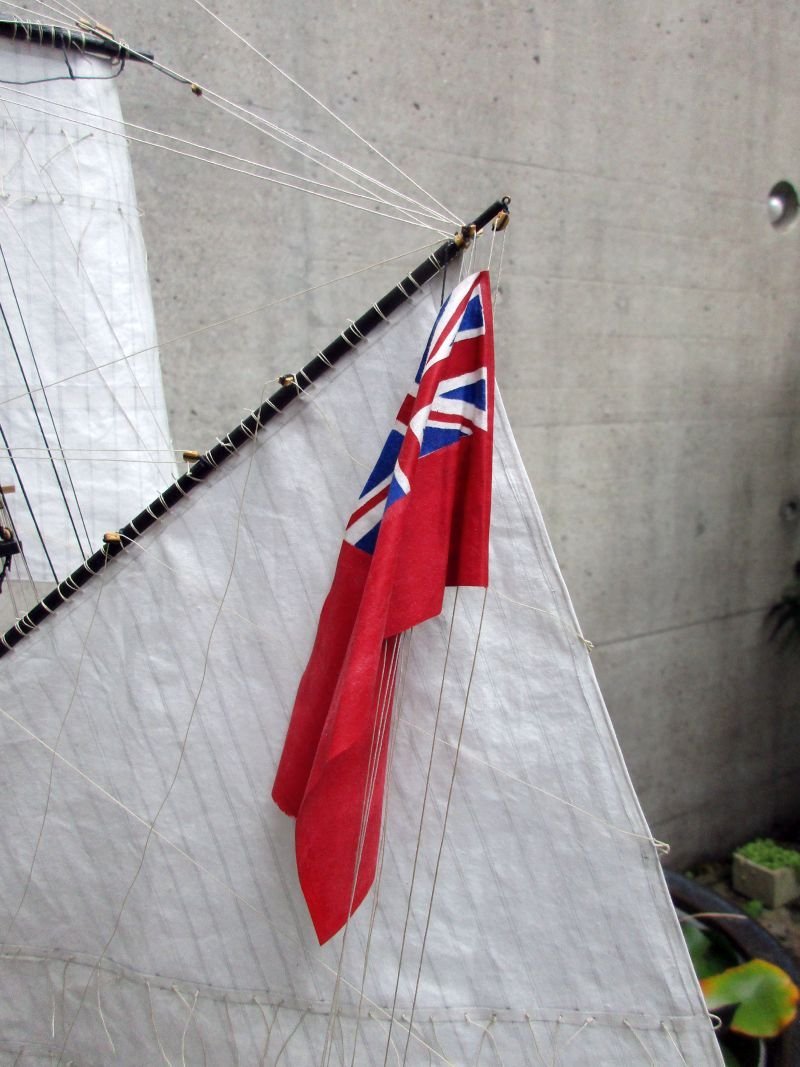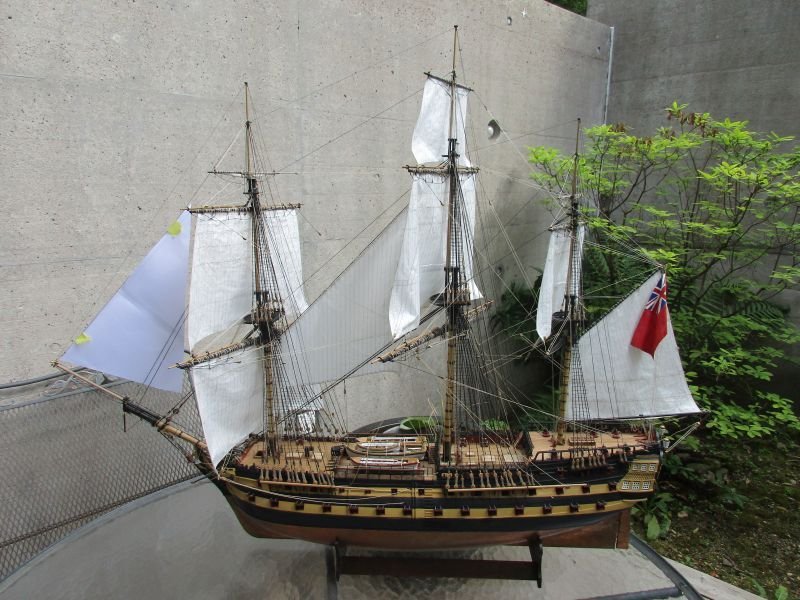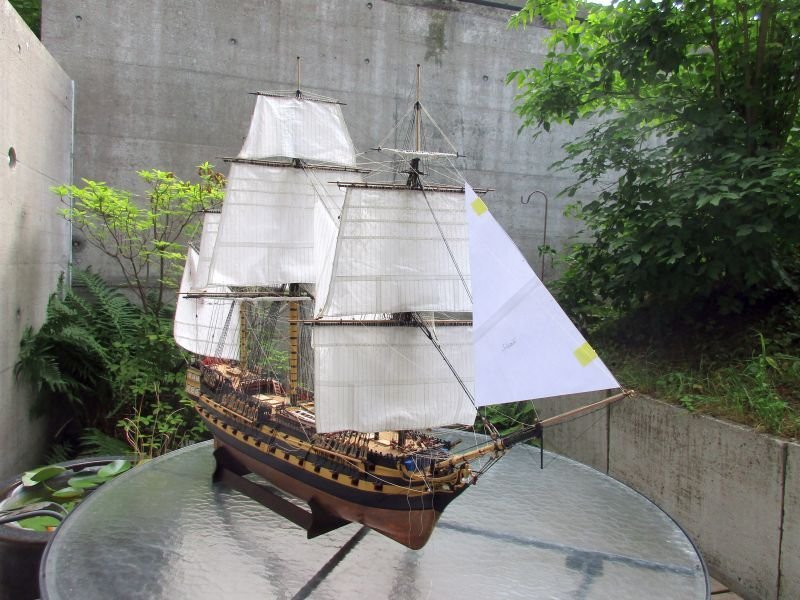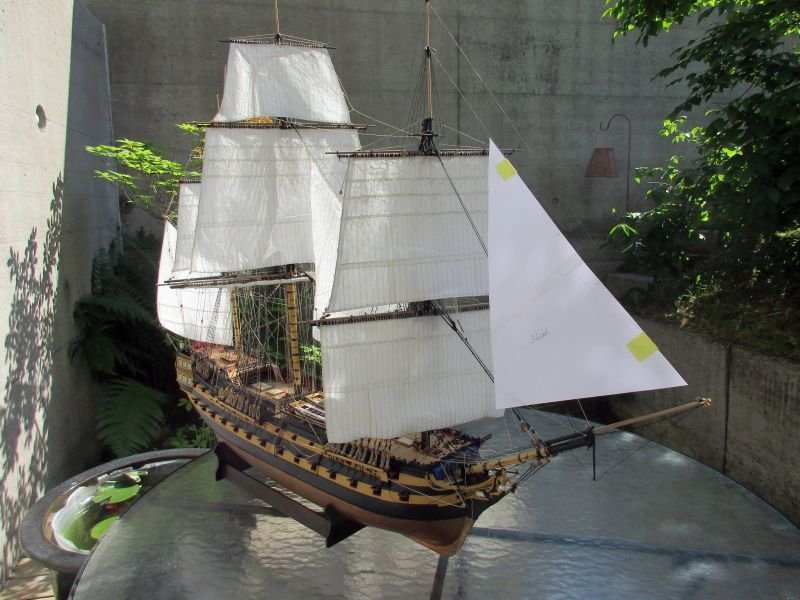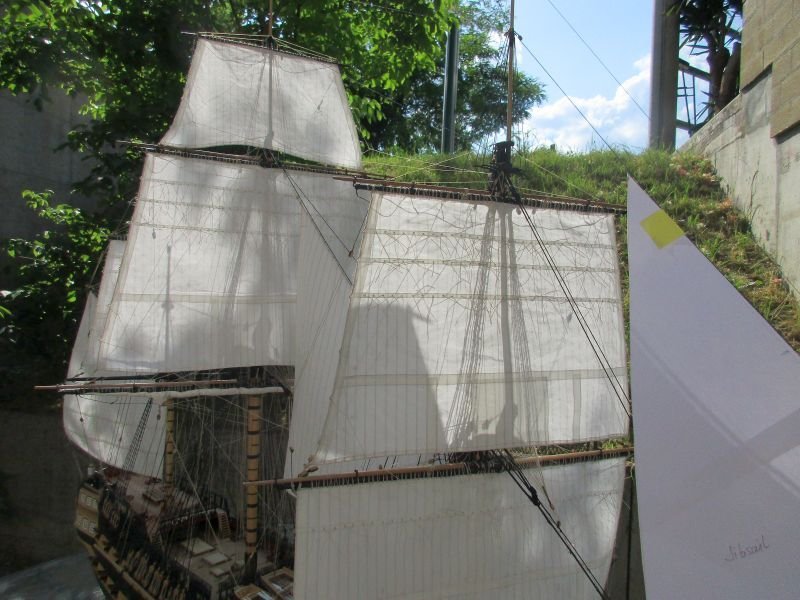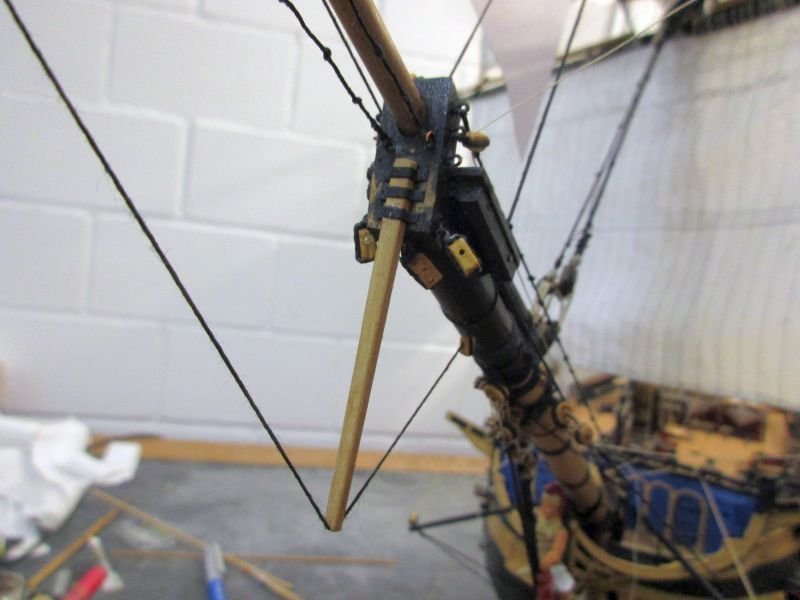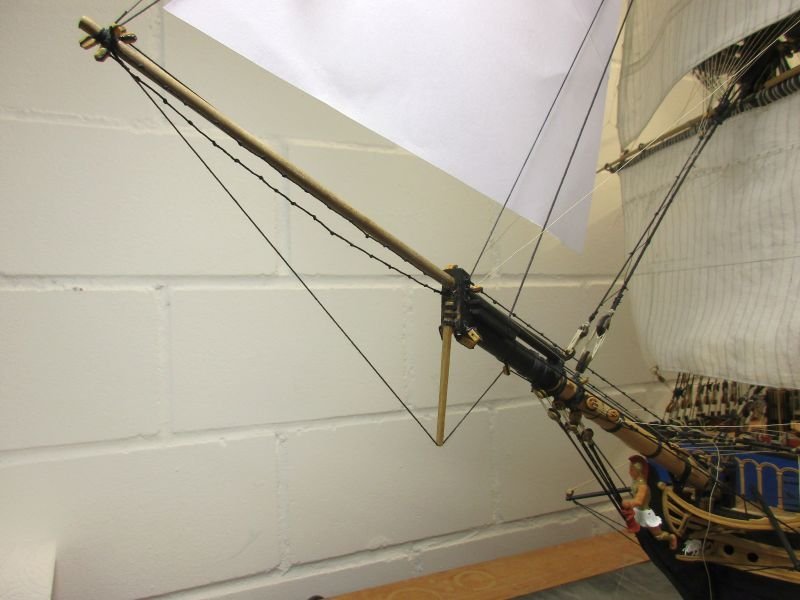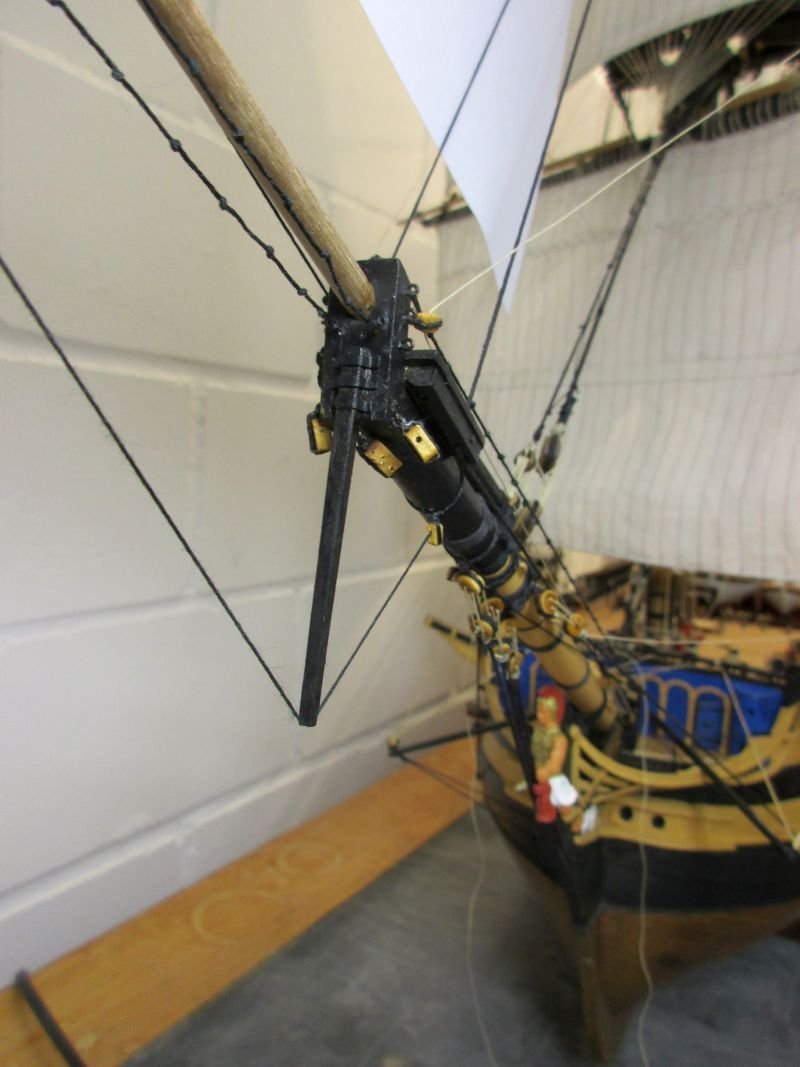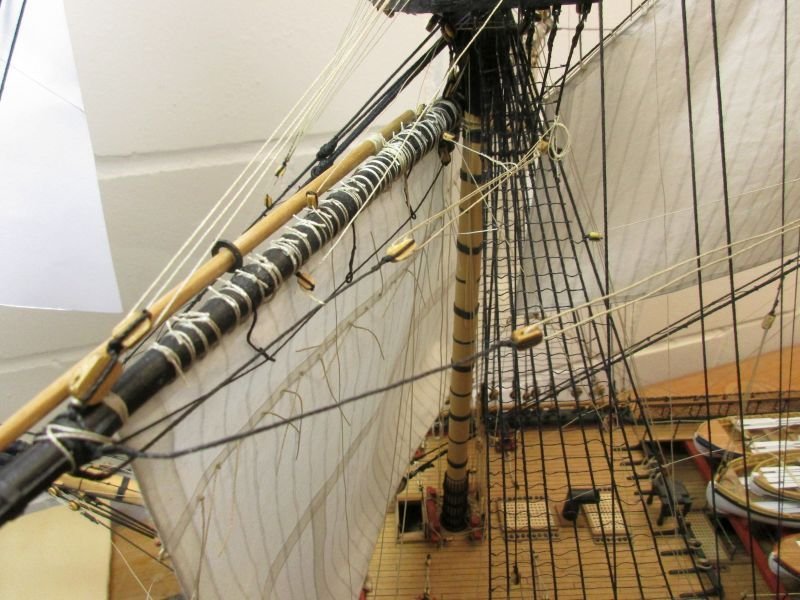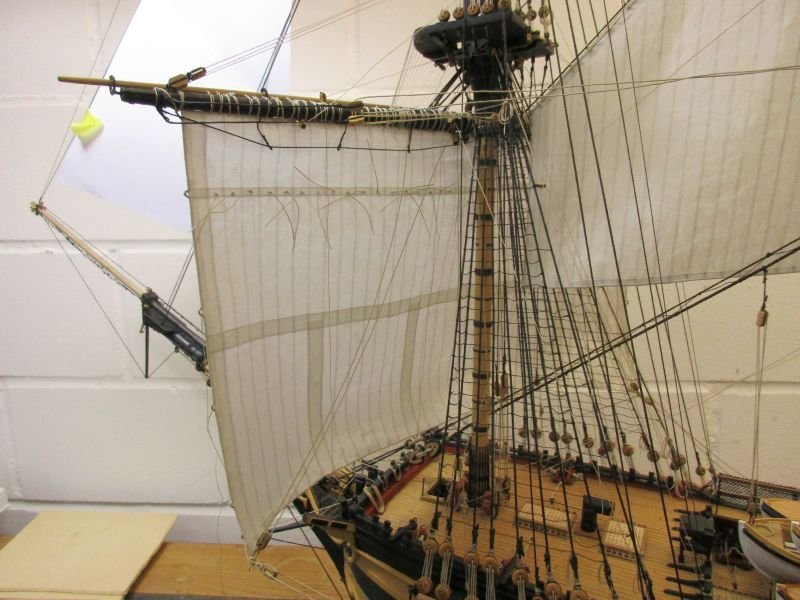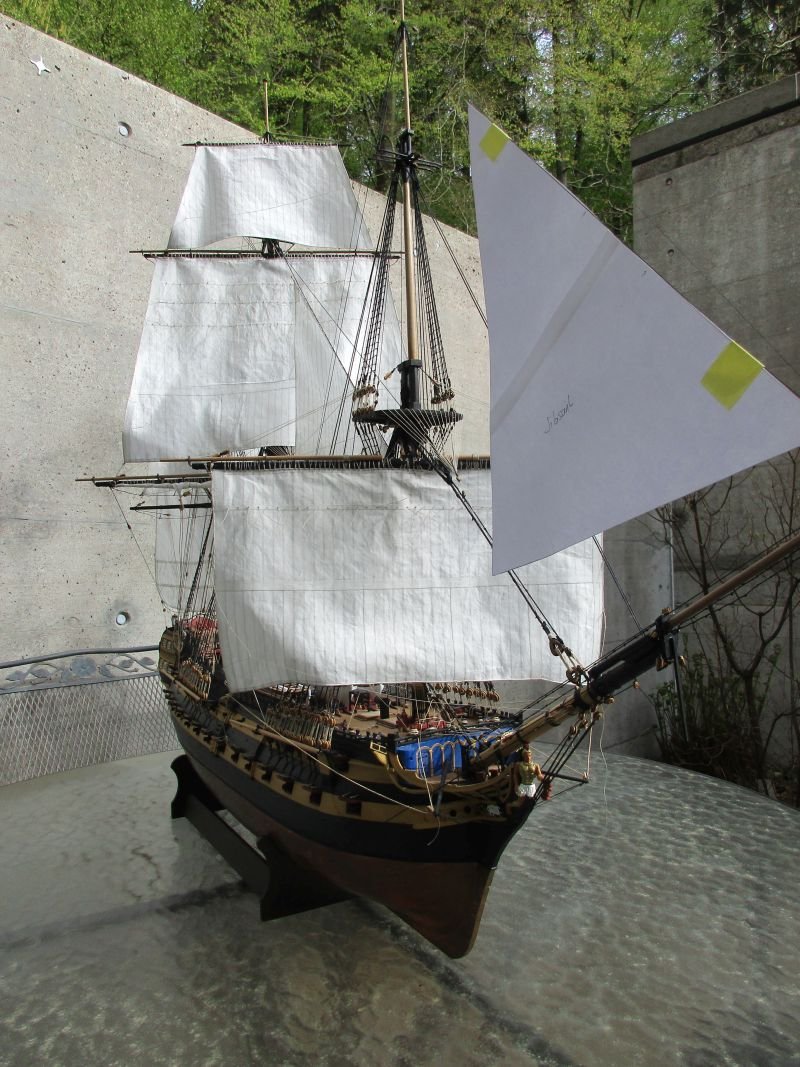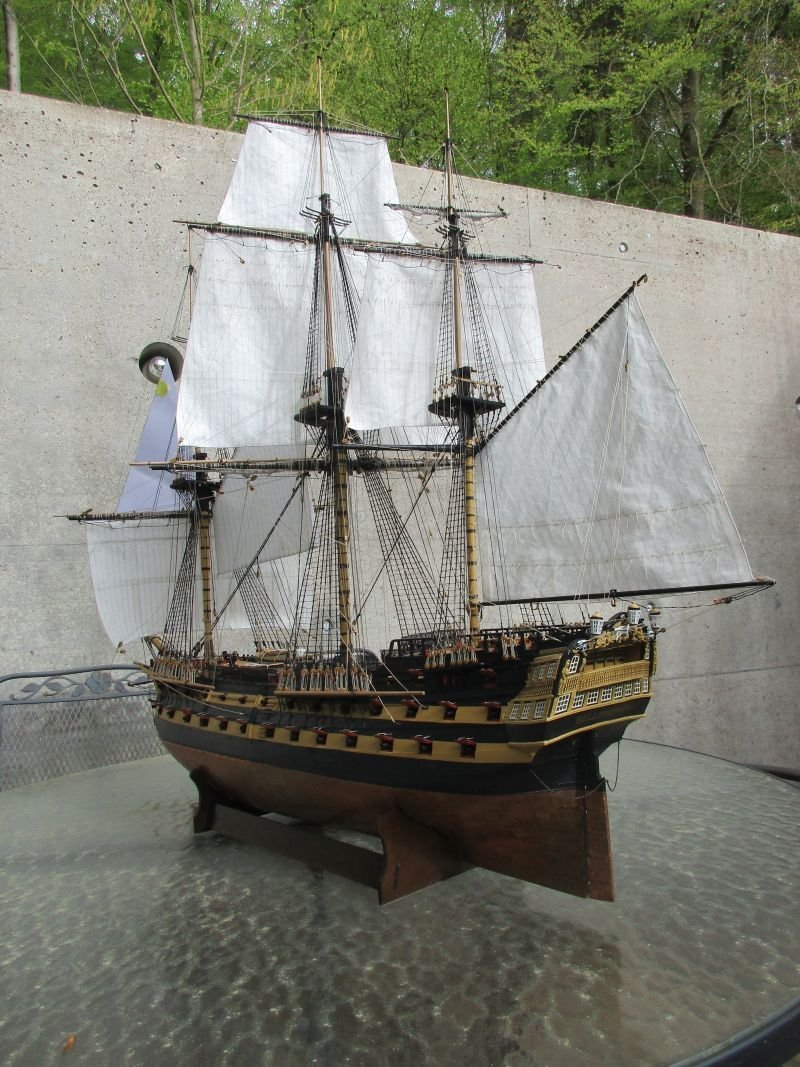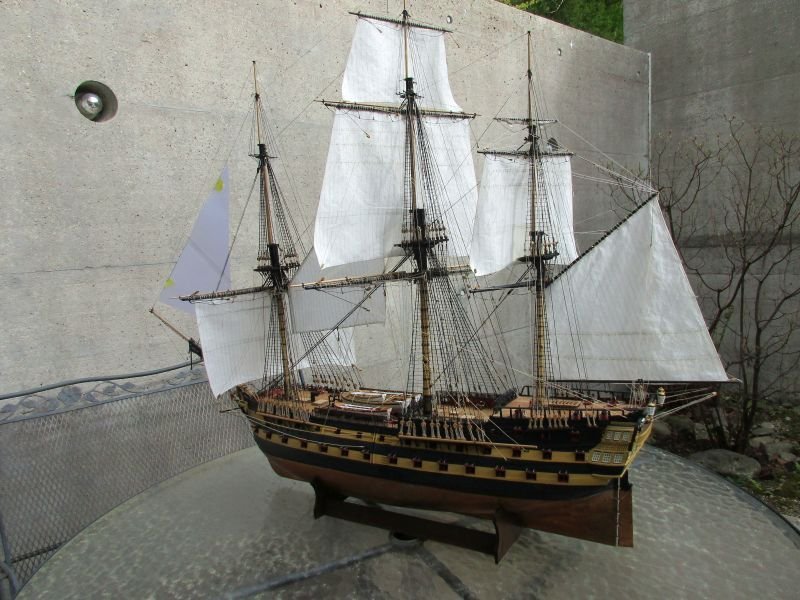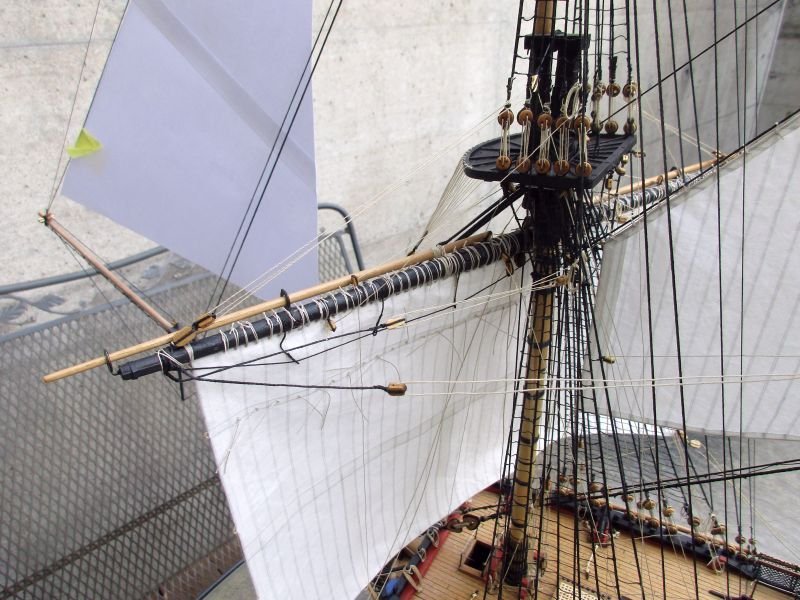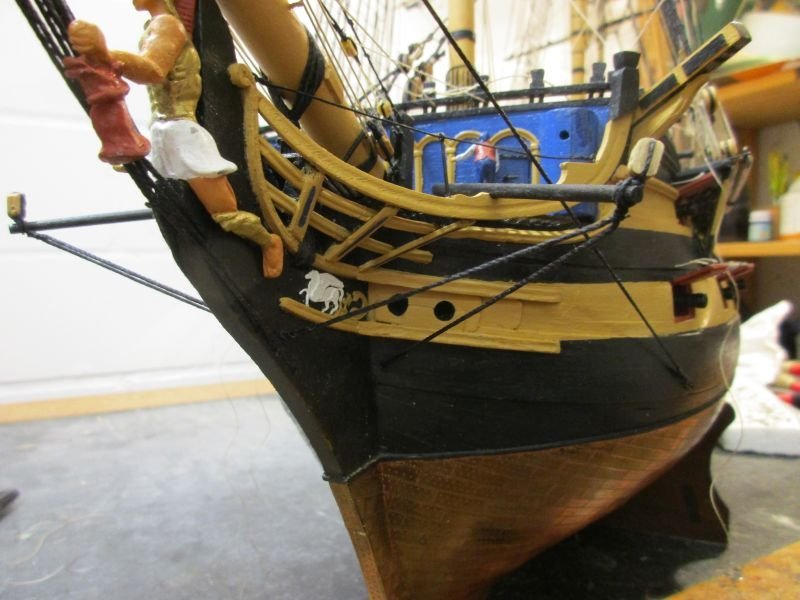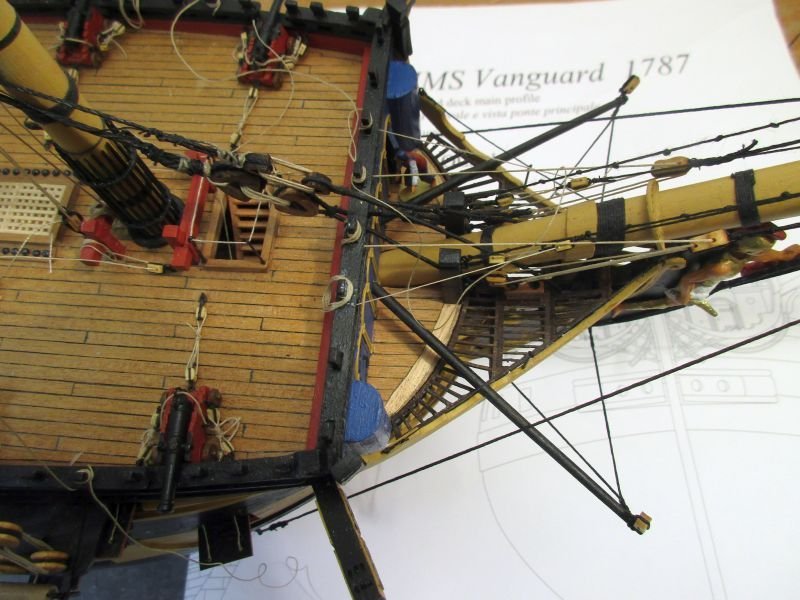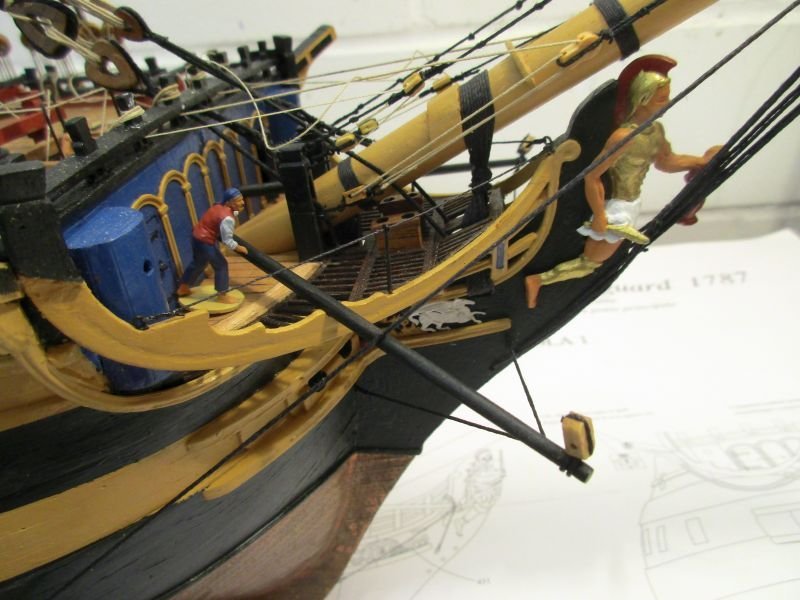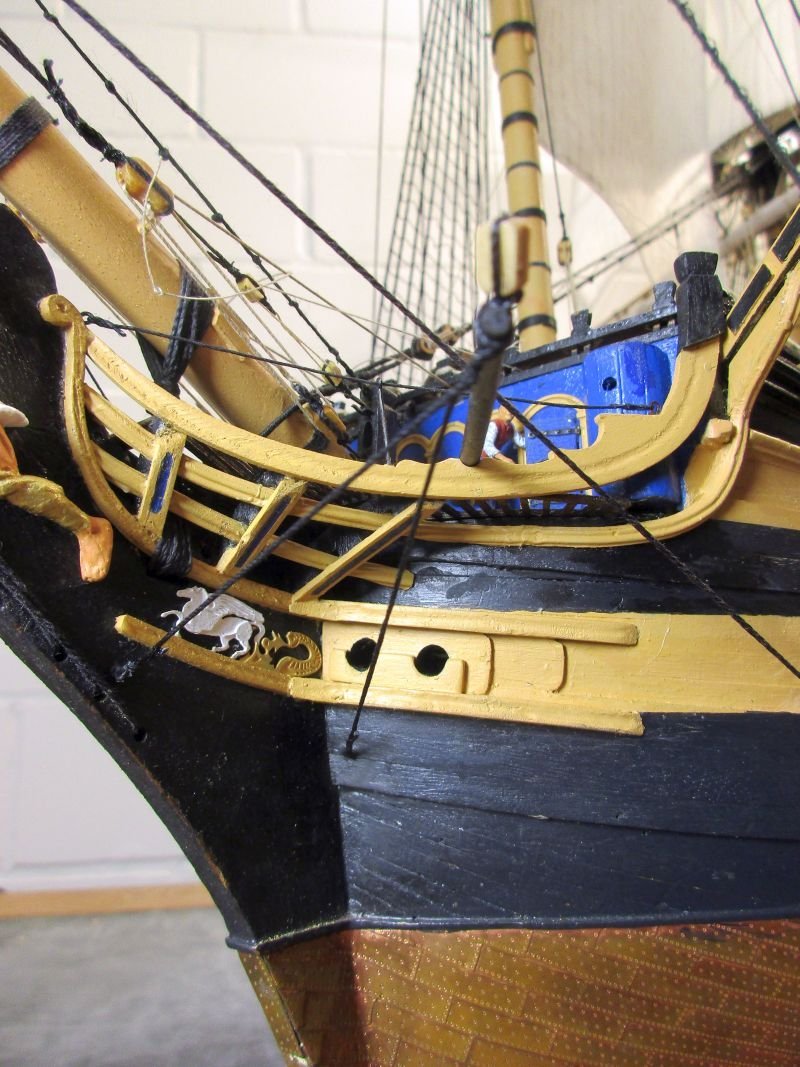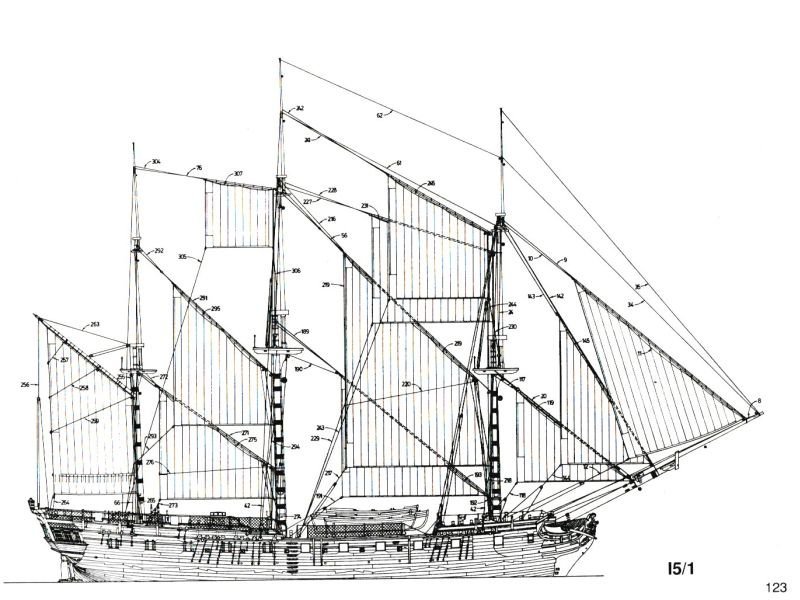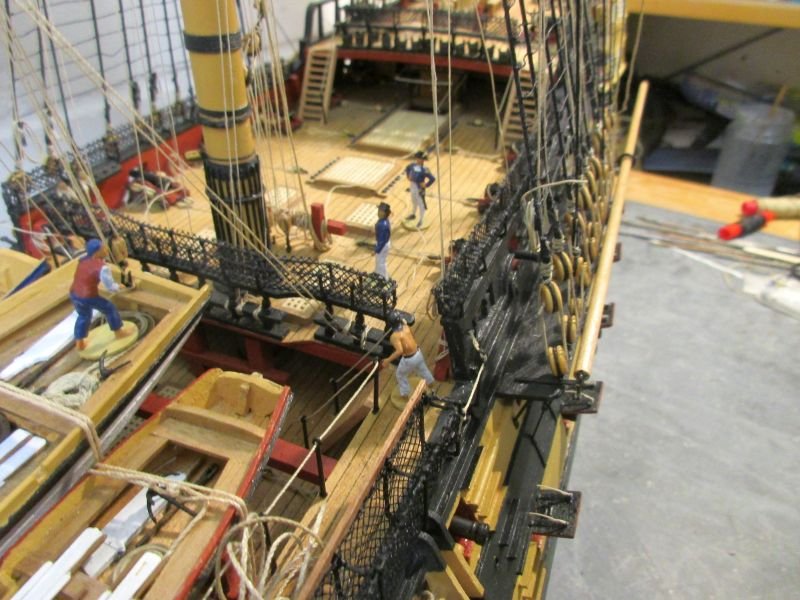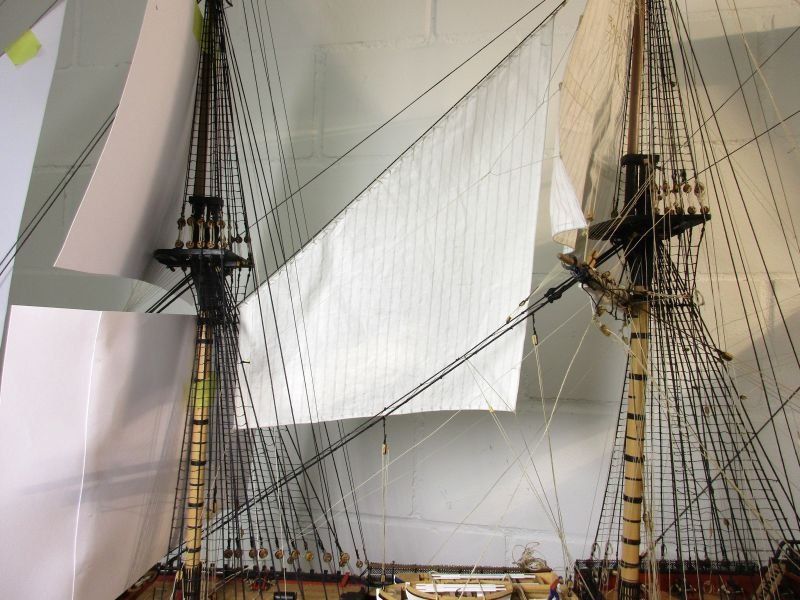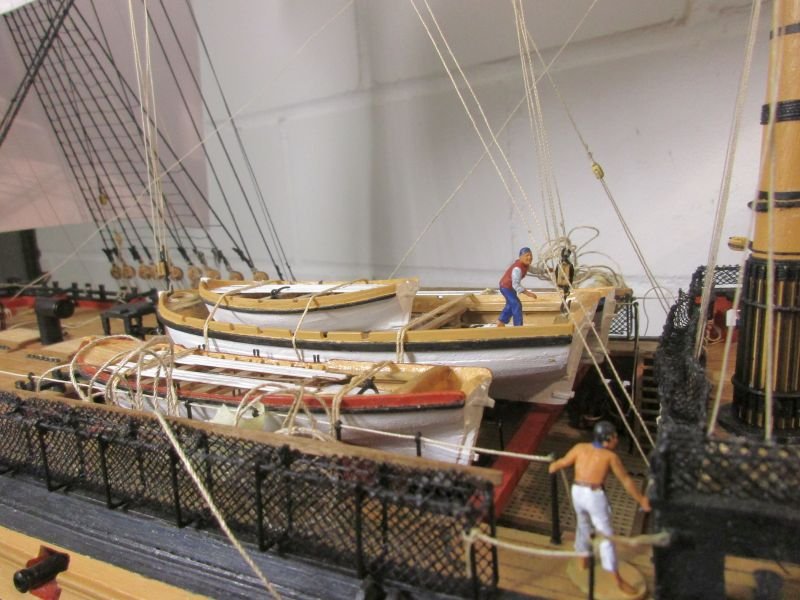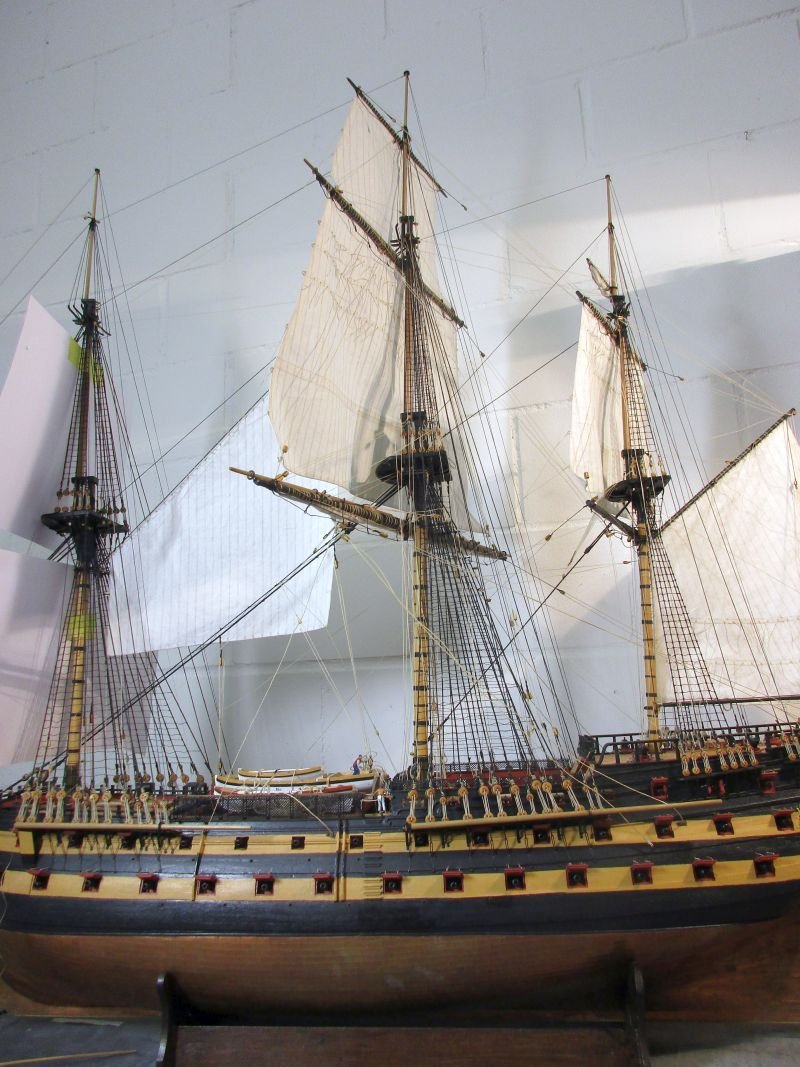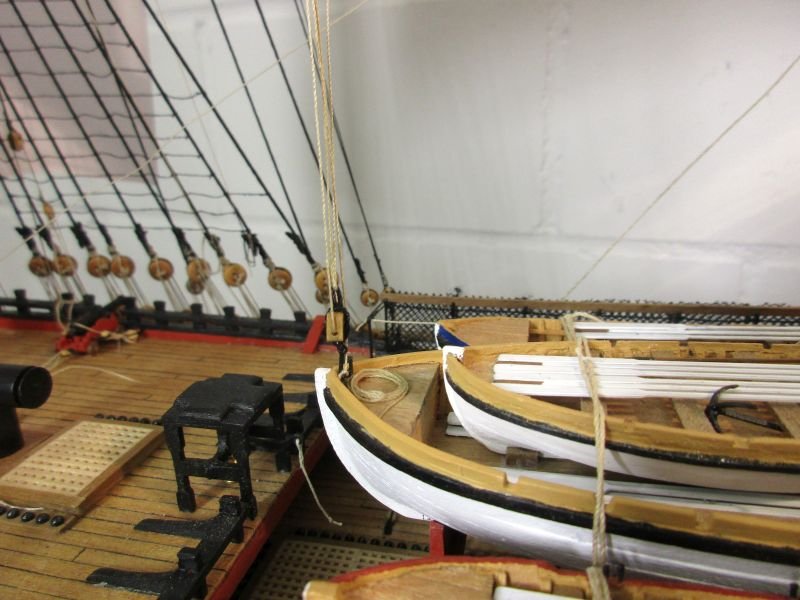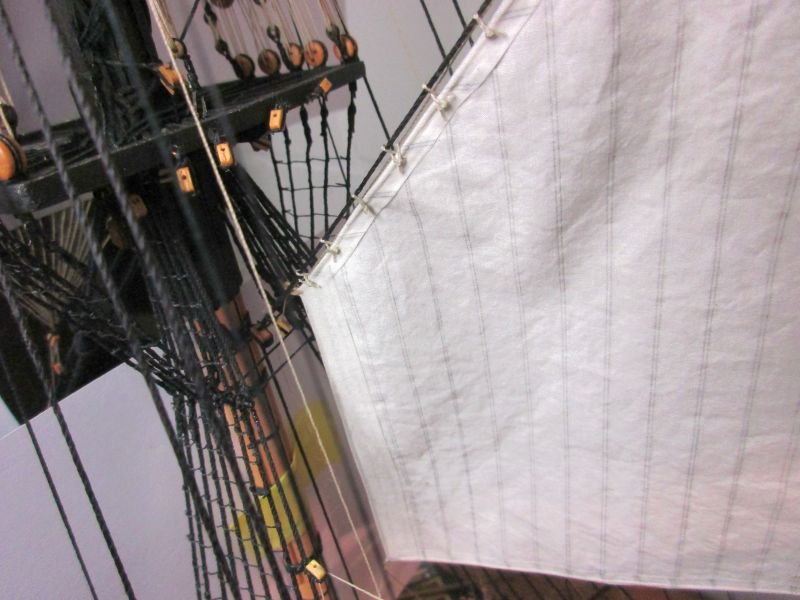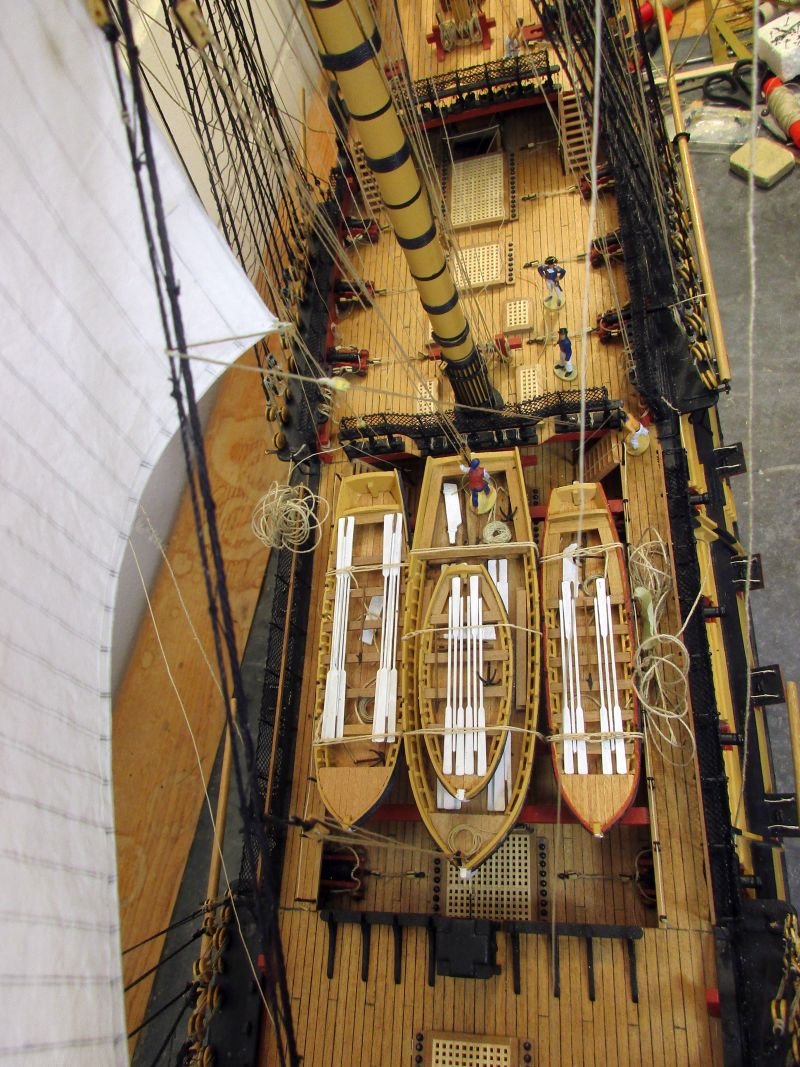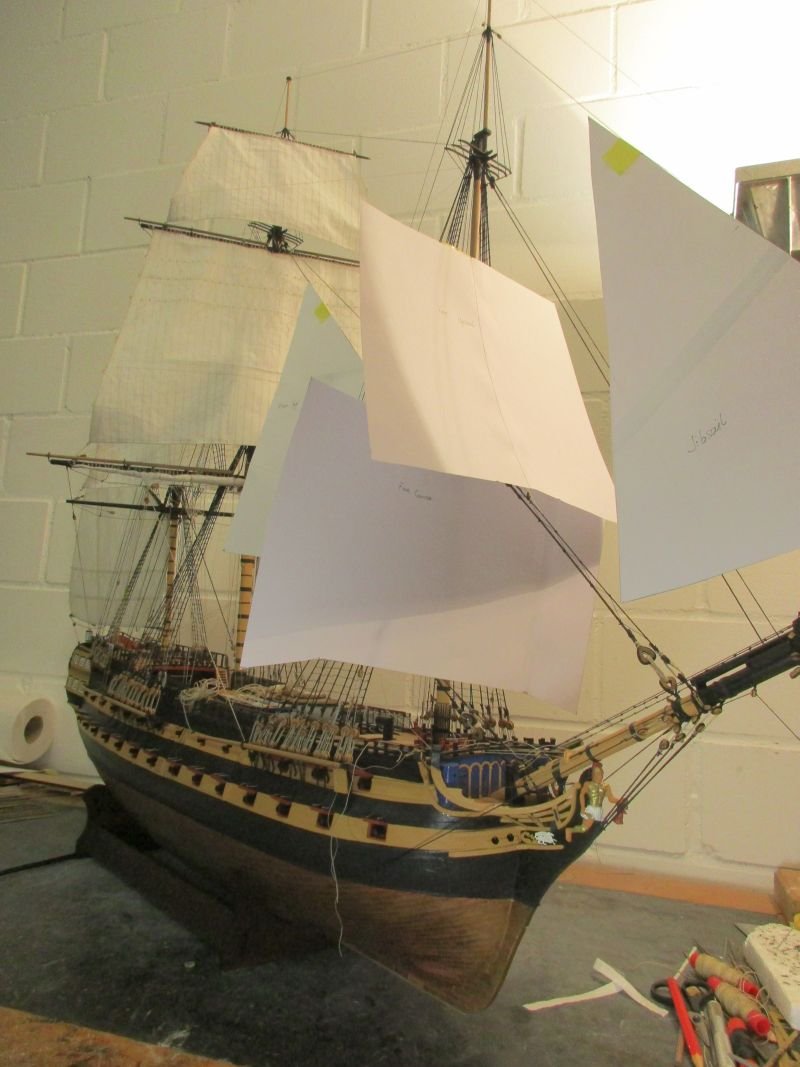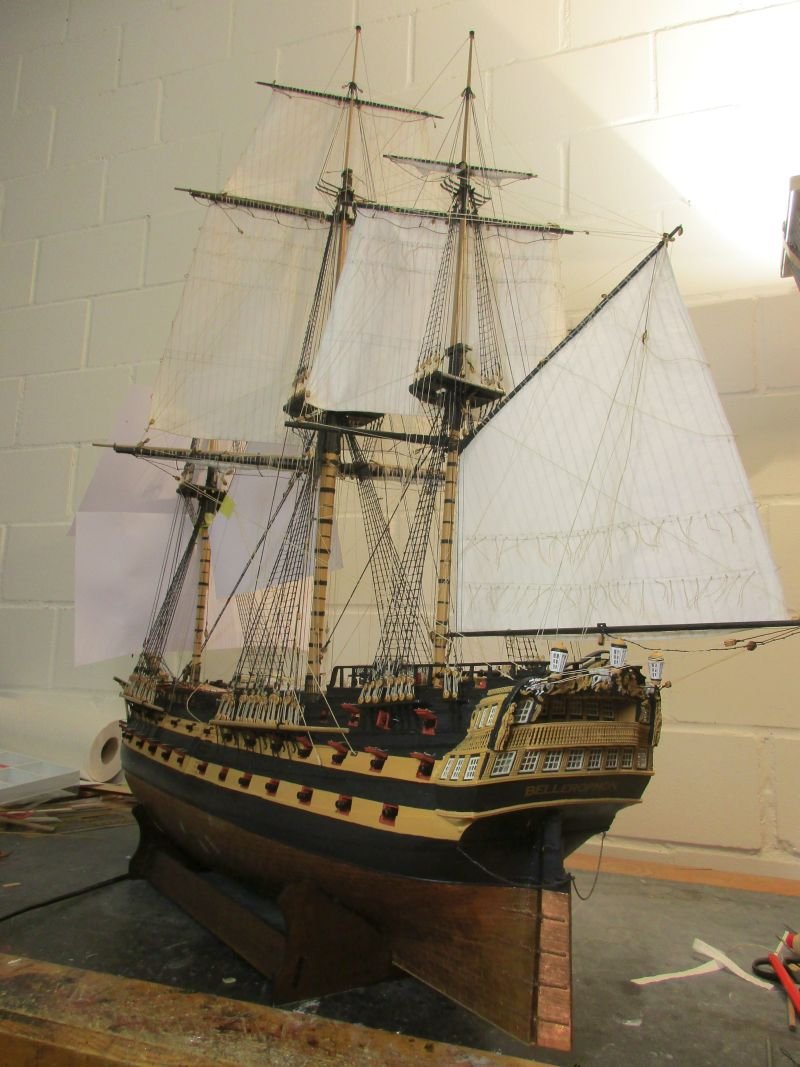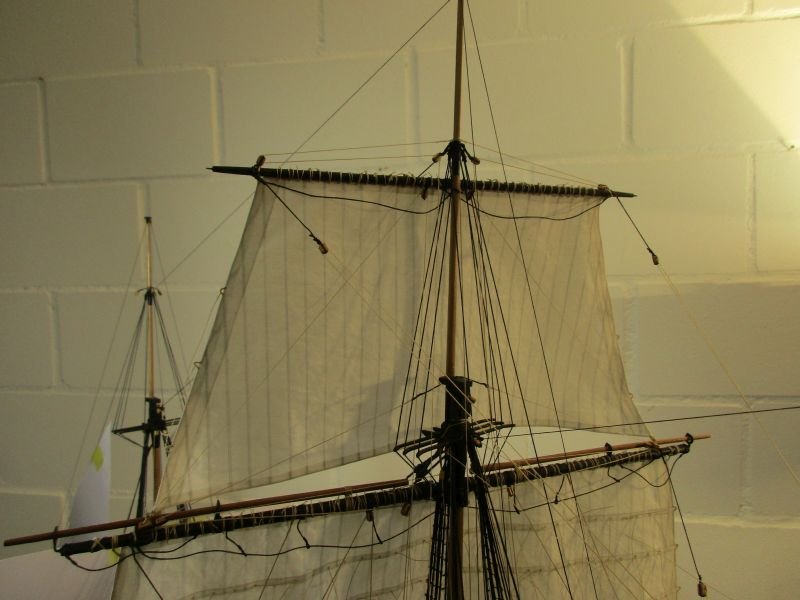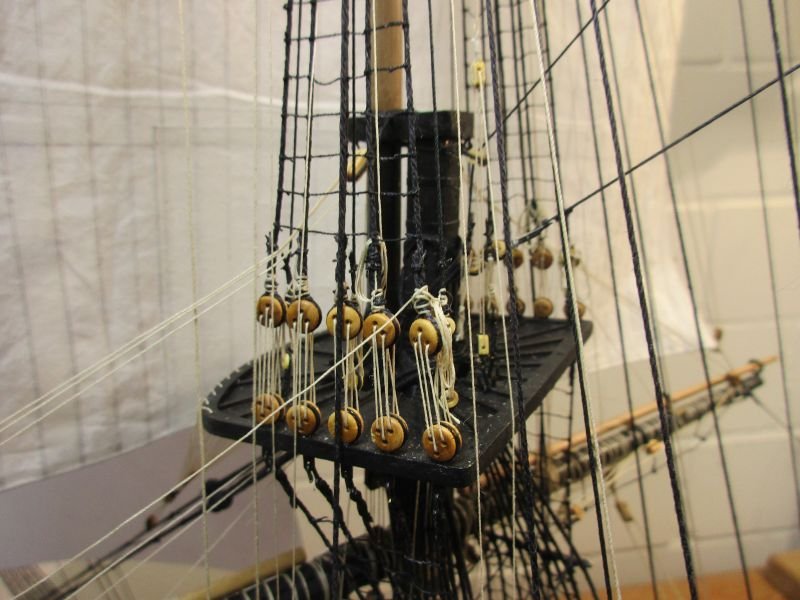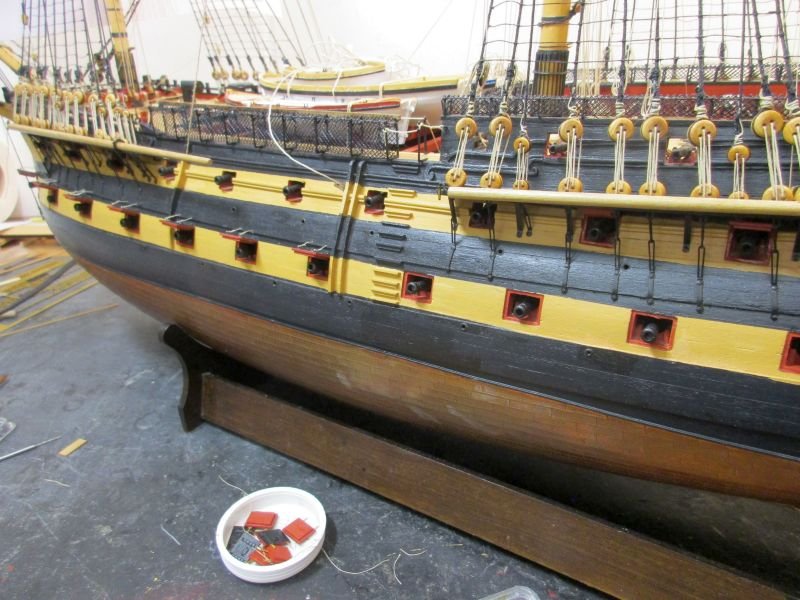-
Posts
1,016 -
Joined
-
Last visited
Content Type
Profiles
Forums
Gallery
Events
Everything posted by flyer
-
Allan's advice is of course good and sound - and you really are your own skipper and use the paint you like. However to ensure a lasting joy of your build I would like you to consider something I also wrote in my present build log: (In a book, written by a professional model railroad landscape builder he explains about colour scale. By that he means that if you look at a model in scale 1/100 from a distance of 50cm it should look the same as the prototype from a distance of 50m. And from that distance colours look less bright because of the air absorbing some of the intensity. He says that's the reason that models tend to look like toys if you use original colours. He recommends to always mix in a bit of white or grey and to avoid shiny colours.) Following this advice I always mix about 15% of dull white into all paints, including black. And I use only dull colours. Some very nicely built models are in my opinion made to look like cheap toys, only because of the use of too bright and gaudy colours. Peter
-
do kit designers dislike travelers? or setting up the jib stay Since I started making the sails I had problems with one of them: I simply didn't like the cut of that jib. Although in the book Bellona of the AOTS series the jib looks similar or perhaps even stranger than that on the kits plans, all other sources showed quite differently cut jib sails. First I tried to reshape the sail more in accordance with Lees explanations. Very slowly I finally realized, that in the kit the jib sail was wrongly set on the fore topgallant stay and the jib stay completely omitted. I guess sometime during the making of the bowsprit I was glad not to have to make a traveler for the jib stay assuming that on a 74 a different arrangement was used. Well, it wasn't. Furthermore I think, I never met so far a kit with a decent traveler included. Perhaps there were some approximations like combining stay and out hauler and leading the stay directly through the hole in the jib boom which represents the sheave or setting up a simple ring around the bowsprit. But after seeing how much thinking goes into representing beautiful, detailed stoves which are mostly invisible on the finished model a decent traveler shouldn't be asking too much for... Fortunately the necessary cheek blocks on the fore topmast are included in the instructions. So, the difficulty was only to set up the traveler around the finished jib boom. I searched some stiff brass wire with 0,7 and 0,4mm diameter in the leftover box and bent the 3 parts: ring around the bowsprit, shackle for the stay and hook for the tack of the sail. Owing to the reduced availability of material and my clumsiness the parts are rather a bit oversized. Shackle and hook were finished with a bit of soft solder, threaded onto the opened ring, the whole forced onto the jib boom and the ring closed and soldered. While the jib boom was protected with some masking tape the whole arrangement was now painted. A small block was fixed to the ring for the down hauler. As jib stay I fixed some 0,5mm black thread to the shackle, led it up and through the starboard cheek block on the fore topmast and down the fore channels. I set the end up with a simple tackle, hooked into a ringbolt on the channel. The out hauler is 0,5mm natural thread (slightly oversized again), leading through a hole in the outer end of the jib boom (this represents a sheave) and back towards the portside knighthead. Again it is made fast with a simple tackle, hooked into the lower part of that knighthead. Now I made an adapted paper template to test the jib sail and found it looking definitely more convincing. the skipper checks the parts of the traveler the ring is not yet soldered finished traveler in place jib stay through the starboard cheek block jib stay tackle inboard of the shrouds in hauler set up with a tackle to the knighthead - its end is belayed in front of the skipper adapted jib sail template on the new jib stay
- 366 replies
-
- bellerophon
- victory models
-
(and 2 more)
Tagged with:
-
You should use the Victory Models plans only as a general guideline and check carefully with Lees. The plans are generally good but may have some disputable details. There were also several changes in the rigging from Bellona to Vanguard - e.g. Bellona still had the lateen mizzen yard. The Victory Models plans on the other hand show for example the topmast stays rigged below the associated preventer stays which is quite likely the wrong way around.
-
fore topmast staysail This as well is set furled. By reducing foot and leech each by 20%, I got a sail area of roughly 2/3 of that on the plan. The sail was again made in a simplified way and bent to the fore topmast stay. Because I did earlier rig the preventer stay above the main stay I had to set the staysail on the stay itself. Perhaps thismeans, that the arrangement of the stays is in fact incorrect. The sail was bent to the stay with robands and all lines were added. While now furling the sail tried to follow the explanations of John Harland in 'Seamanship in the age of sails' - as well as I understood them. The outcome doesn't look to bad and after belaying the lines, I'm now ready to move on to the last sail, the jib. plan with reduced sail area sail set, not yet furled ...and furled looking ok
- 366 replies
-
- bellerophon
- victory models
-
(and 2 more)
Tagged with:
-
spritsail yard and sail A by 30% reduced and furled spritsail was bent onto its yard. Without the spritsail topsail yard the rigging could be a bit simplified. On the other hand I did add the guys according to Lees' description. The yard was triced up by about 20°, as on the painting above. I rather like the dynamic impression Bellerophon gives with this arrangement.
- 366 replies
-
- bellerophon
- victory models
-
(and 2 more)
Tagged with:
-
the spritsails and John Harland James Lees in 'Masting and Rigging English Ships of War' explains nicely the different elements of the bowsprit rigging but doesn't always indicate what's right and wrong. Additional information such as own research or flawless kit plans are needed. John Harland is the author of 'Seamanship in the age of sail'. Actually I was just looking for some information about how to set spritsail yards and eventually a sail. But then I found in his book a very interesting chapter about spritsails (page 85ff.). A few questions were answered but still more raised. What he writes, especially about the sprit topsail, had me thinking. He states that - and I hope I understood him correctly: When the flying jib boom was introduced together with the flying jib, immediately the dolphin striker and martingale stay followed to hold the new boom down. However the martingale stay made the setting of the spritsail topsail impossible and the spritsail topsail yard became useless and disappeared. The martingale backstay at first made an almost vertical return to the bowsprit to allow the spritsail to be set. Later the martingale backstay was led directly to the bow, thus preventing also the spritsail to be set and it passed into disuse as well. The proposal of the kit to have dolphin striker and spritsail topsail yard simultaneously seems illogical although John Harland states that this configuration may be seen on contemporary models and even on today's HMS Victory. On the other hand the way the martingale backstay is set up, which initially baffled me, is now explained. So I seemed to have 3 options: - scratch the dolphin striker again and set both spritsail yards (yay - all that work on the 2 replacements for nothing!) -scratch the spritsail topsail and its yard and have a somewhat ambiguous situation with a dolphin striker and no flying jib boom. - add a flying jib boom (yay again!) Then I noticed that just on John Harland's book cover a situation like the second one seems to be depicted. Also, if you had to take in the flying jib boom for some reason, you would leave the dolphin striker in place . So, option two was it. Additionally he stated that near land the spritsail was never set because it hampered the forward vision from the quarterdeck too much. Finally he explains that when sailing by the wind the spritsail yard was triced up also without a sail set and the guys on the lower or weather side were hauled taut to give additional downward pull to the jib boom. Conclusion: I will scratch the spritsail topsail and it's yard and adapt the rigging of the spritsail yard accordingly. The spritsail yard with a furled sail will be triced up by about the same amount as all the yards are braced. I will also add the missing guys to the spritsail yard. In this Thomas Luny painting (found in the web) Bellerophon is depicted with dolphin striker, flying jib boom and without spritsail topsail yard. Another Thomas Luny painting (also found in the web) showing a two-decker with similar configuration sailing by the wind and showing the triced up position of the spritsail yard.
- 366 replies
-
- bellerophon
- victory models
-
(and 2 more)
Tagged with:
-
After using it for years and now taking the picture I noticed, that the red isn't actually textile paint - but works anyhow. The TC is an estimated 200 - 260 (per inch). The second picture compares the fabric delivered with the kit (right) with what I found in a small local mercer after asking for the 'lightest, densest, natural cotton you have'. The somewhat ham-fisted sailor btw is in scale 1/72. Cheers Peter https://en.pebeo.com/catalogue/couleurs-pour-textiles
- 366 replies
-
- bellerophon
- victory models
-
(and 2 more)
Tagged with:
-
Hi Alistair Thanks a lot for the compliments. Also, I appreciate your appreciation of the concrete. The backdrop is a wall connecting the house (kind of yellow clinker, the same Mario Botta sometimes used) to a later added outlying concrete garage, thus forming a nice protected patio and outdoor photo spot. Hi Alan and Meriadoc An uncoloured but sincere thank you for the flattering feedbacks. Cheers Peter
- 366 replies
-
- bellerophon
- victory models
-
(and 2 more)
Tagged with:
-
fore topgallant yard and sail The fore topgallant sail was again a reduced and simplified one as it was to be furled. Similar to previous sails all the lines were attached and then yard and sail hoisted and fixed with tie, lifts, braces and parrel rope. However sometime during that process I found that the main topmast stay was broken. The eye around the mouse had somehow parted. After pondering about repair possibilities I had to admit that the cleanest solution would be to make a new stay. All this promoted of course the use of some creative language... Fortunately my running rigging's belayings are fixed with diluted white glue which may be dissolved again with some water. The fore bits are quite crowded with rigging but most of the time I was able to untie the correct lines and other times I had to revert again to creative expressions. The new stay was set around the masthead and then threaded through the robands of the topmast staysail and led to the point above the bits, where a new block was spliced into its end. Now after re-belaying a zillion lines I could finish the topgallant yard. fore topgallant yard with furled sail in place hoisting the flag Sometime during all that sail work I also made a flag to hoist at the mizzen gaff. I wanted to have a red ensign with the pattern after 1800, the one Napoleon might have seen, when he was aboard. Trials with an inkjet printer didn't work. It was not possible to print congruently on both sides of the fabric and, worse still, the ink would run with any liquid including something to seal it. Some patience, textile paint and fiddling with masking tape brought an acceptable result. The flag is hand painted onto the same cotton I use for the sails. Hoisting it was a bit difficult. Obviously the flag line leads through a block at the gaff but where to belay it at the deck? The kit's plans show a block at deck level with the ends of the flag line seemingly joined into a loop. But no information where on deck that block was positioned. Information in my clever books and the web was also vague about the lower end of flag lines. As the length of the loop of the line should be adjustable to the position of the gaff I decided to hook the lower block into a free ringbolt at the taffrail, and join the line ends with some spare length coiled and hanging there. I have no idea what the navy way was but that's the best I could come up with my way. red ensign with the pattern after 1800
- 366 replies
-
- bellerophon
- victory models
-
(and 2 more)
Tagged with:
-
Well, thanks, I'm as fine as I hope you are. In a way of speaking, the Bellerophon build did interrupt by itself. While struggling to hoist the fore topgallant yard I found the main topmast stay broken - the eye around the mouse parted somehow. I had to make a new stay, to replace the broken one and set up quantities of rigging anew. But I'm on track again and hope to have an update within a few days. Peter
- 330 replies
-
fore topsail This sail was made and attached in a similar way as the previous two topsails. The space to work on the running rigging gets narrower and narrower as more sails are set. However I still think that the working sequence according to Wolfram zu Mondfeld's advice is sound: start low and aft and work upward and forward. Some maintenance work is also continuously going on. Beside the dolphin striker I had to reset some too lose lines and replace a broken cleat. Like on the real ship - no rest for the poor carpenter and bosun. fore topsail set and drawing those sails are pretty transparent detail of the topmast head
- 366 replies
-
- bellerophon
- victory models
-
(and 2 more)
Tagged with:
-
The dolphins strike back! The dolphin striker broke 3 times (the original and twice a replacement made from the same plywood) and I started to wonder if this brittle part really did much good for the stability of the jib boom rigging. I made a replacement from a sturdier piece of wood. A piece of 2x3 mm wood strip was worked to the rough form of the kit's dolphin striker, and 3 iron bands (cartridge paper) hold it against the bowsprit cap. the raw dolphin striker with the 3 'iron' bands it is a bit fatter but not too much out of proportions to quote Mick and Keith: paint it black
- 366 replies
-
- bellerophon
- victory models
-
(and 2 more)
Tagged with:
-
According to 'Seamanship in the age of sail' by John Harland the anchor cable never went directly to the capstan - except in small ships or boats - but was hauled in with the messenger. That messenger formed a closed loop around the capstan and a place forward, where the cable could be bent to it by the nippers (short bits of thin rope). The messenger was hauled aft by the capstan also taking the cable aft. When the cable neared a hatchway to the cable tier it was unbent and lead below. The messenger continued empty around the capstan and was lead back forward to be connected again with the cable. When at anchor, the cable was tied off (belayed) to the riding bitts. Those are a substantial pair of square posts, projecting vertically above the deck and joined aft by a heavy crosspiece, just abaft the foremast. The unused length of cable went from there through the hatchway to the cable tier. When the anchor was stowed during voyage the cables were unbent. In preparation for coming near land the cables were bent again and the anchor lashings removed except simple lashings to the ring and to the shank. In preparation for anchoring a sufficient length of cable for the expected depth could be ranged on the deck ready to let go while the part of the cable coming up the hatchway was already belayed to the riding bitts. So... I guess you need to know in what situation your Mayflower is to know how to arrange anchors and cables. And while writing this I realized that on my models I may have depicted some strange arrangements but then I'm only a landlubber, somewhat like-minded to Stephen Maturin. Cheers Peter
-
Many thanks for the positive feedbacks. The yard tackles are very well documented in the kit's plans. You also find a description and an illustration on page 71 in Lees' The Masting and Rigging of English Ships of War 1625 - 1860, a treasure of information for working on our models. Cheers Peter
- 366 replies
-
- bellerophon
- victory models
-
(and 2 more)
Tagged with:
-
Fore course While comparing the kit's plans and Lees' book I found that there seem to be too many buntlines in the kit's plans (also already installed for the main course). Lees mentions only 2 per side - a total of 4 - while the kit has 3 per side. The total of 4 is confirmed by several Books of the AOTS series. Therefore I reduced the number of buntline cringles at - and the number of associated buntline clothes on the fore course accordingly and could at the same time simplify the hole setup a tiny little bit. The 2 superfluous buntlines on the furled main course remain for now. Making the sail, bending it to the yard and hoisting up the whole shooting match was similar to previously fabricated yards and sails. The yard tackles were installed as on the main yard. fore course with the 2 buntline cloths on the port side visible the yard tackle is hooked into the futtock shrouds I also took advantage of the moderate weather (it was neither raining nor raining cats and dogs nor snowing although it is still the month of April) and took Bellona outside for a few photos:
- 366 replies
-
- bellerophon
- victory models
-
(and 2 more)
Tagged with:
-

lead deadeyes?
flyer replied to Woodshipguy's topic in Discussion for a Ship's Deck Furniture, Guns, boats and other Fittings
This must be a record-breaking example of tin pest. The deadeyes are most probably pewter. To avoid tin pest it should be alloyed with antimony or bismuth. Given the amount of damage there seems to be almost pure tin - at least you shouldn't have a lot of toxic substances on your hands. -
bumpkins While working on the fore course I realized that the bumpkins were needed now. Installing as per plans was easy and the shrouds were such fun to set up that I did it twice. In the plans I found no information about their diameter. 1mm seemed logical as this was the same as the tacks. However, finished it looked out of proportion and I reduced to 0,75mm which looked better. The bumpkins are not lashed to the rail. Lees states that with the introduction of the 2nd shroud (ca 1773) the lashing was omitted. 1mm bumpkin shrouds - too fat! 0,75mm - looking better view from above the bumpkins are not lashed to the rail
- 366 replies
-
- bellerophon
- victory models
-
(and 2 more)
Tagged with:
-
It seems to be the topmast staysail. In the book 'Pandora' (by John McKay and Ron Coleman) of the ATOS series you find that plan of all the staysails. The topmast staysail is the largest of them and if you check where its corners are in relation to the masts it fits the sail in the painting - which is by the way showing an extremely interesting manoeuvre. Thanks for sharing. Cheers Peter
-
Hi Allen Interesting information. Do you know how they stored the first shots for each gun when preparing for battle after they abolished the shot garlands? And by BTW, if I'm not mistaken, the centre of buoyancy should not change if you move some weight lower down - just the centre of gravity should be lower and therefore stability should increase. Cheers Peter
-
main topmast staysail Before setting up that sail I installed the stay tackles. And after all those years I finally found the correct and logical position of them: One over the main hatch and the other over the fore hatch. When not in use both tackles should be fixed to eyebolts on deck. To better show the complete tackles I hooked them to two eyebolts in the launch - the same that would be used to lift that boat. My explanation is that that the boats are actually not covered and will be used soon. Therefore both tackles are already being prepared for the lowering of the boats. Fortunately the sail itself is another rather simple one. It however potentially conflicts with the - yet to set up - braces of the fore- and the fore topsail yard. Therefore I attached most lines only provisionally. Where to fix the whips (tackles) of the sheets needed thinking. The kit's instructions say to fix the standing part to an eyebolt 'on deck', while the running end is brought to the pin rail abeam the main mast. This looks strange, and would mean to fix a eyebolt near the pin rail which I dare say would cause quite a few stubbed toes. Lees fixes one end to an eyebolt in the boat skid and the running part to the boat skid or a cleat close to the standing part. Boat skid? Perhaps this means the beams, where the boats are stored but that location is already a bit crowded. However this would be a different position, nearer to the centerline of the ship and probably a more logical position to operate the sheets. As a compromise I bent both ends to the forward quarterdeck rail, as much to the side as possible. Some time I pondered about how to bend the sail to the stay: Rings, hanks and robands in different forms are methods shown in my clever books. Finally I used robands in a figure of eight form as implied but not specified in Lees. tackles and staysail added fore hatch stay tackle fixed to the launch main stay tackle staysail with robands where the port side sheet pendants are belayed overview of the deck with port staysail sheet in the meantime the carpenter also found time to fix all the gun port lids
- 366 replies
-
- bellerophon
- victory models
-
(and 2 more)
Tagged with:
-
Hi Malcolm Your Agamemnon is looking goood! Might I suggest to install some dummy gun carriages for the dummy guns on the lower deck - perhaps something like I did on Bellerophon (which I copied from md 1400cs' Wasa)? Sure, it's tedious work, but I think it very much improves those fake guns. Cheerio Peter
-
main topgallant yard and sail This was supposed to be the easiest sail to set so far: No reef bands and only simple leech linings. Well, I wasn't right. The sail itself was rather quickly done and bent to the yard. But then I realized that the same amount of running rigging as for the other sails had to be set up and threaded to the maze of already installed lines. And having the yards braced made access from the starboard side more difficult. Sometimes I could work across the ship which however endangers what's already there. But the whole workforce finished the task accident-free, for once. In one point I had to deviate from the kit's instructions. As confirmed by Lees, the buntlines should lead forward, through a sheave in the fore topmast aft trestletrees and down to the deck. I forgot to drill the necessary holes when setting up that top. After the near disaster with the crosstrees I didn't want to drill 0,5mm holes into a 1mm wide, flimsy plywood part. Fortunately Lees sais that earlier there were blocks lashed to the same trestletrees to carry the buntlines. A worried skipper and an old fashioned bosun then decided between themselves to set up the buntlines the old way. Now, half of the sails are set and I'm quite positive that I shall indeed finish Bellerophon in this decade. main topgallant sail set main top with belayed topgallant sheets the carpenter is also installing the missing lids to the portside gun ports taking total view shots is becoming more difficult - Bellerophon is definitely outgrowing my work space
- 366 replies
-
- bellerophon
- victory models
-
(and 2 more)
Tagged with:
-
Hi Tom Many modellers unfortunately use too bright colours. Using them straight out of the bottle or can lessens the look of their model. I highly recommend to dull all so called 'original' paints. Allow me to repeat something I wrote in my Bellerophon log some time ago: (In a book, written by a professional model railroad landscape builder he explains about colour scale. By that he means that if you look at a model in scale 1/100 from a distance of 50cm it should look the same as the prototype from a distance of 50m. And from that distance colours look less bright because of the air absorbing some of the intensity. He says that's the reason that models tend to look like toys if you use original colours. He recommends to always mix in a bit of white or grey and to avoid shiny colours. I think it works.) Usually I mix about 15 % dull white into any color I use, including black. Regards Peter
- 341 replies
-
- Sophie
- Vanguard Models
-
(and 1 more)
Tagged with:
About us
Modelshipworld - Advancing Ship Modeling through Research
SSL Secured
Your security is important for us so this Website is SSL-Secured
NRG Mailing Address
Nautical Research Guild
237 South Lincoln Street
Westmont IL, 60559-1917
Model Ship World ® and the MSW logo are Registered Trademarks, and belong to the Nautical Research Guild (United States Patent and Trademark Office: No. 6,929,264 & No. 6,929,274, registered Dec. 20, 2022)
Helpful Links
About the NRG
If you enjoy building ship models that are historically accurate as well as beautiful, then The Nautical Research Guild (NRG) is just right for you.
The Guild is a non-profit educational organization whose mission is to “Advance Ship Modeling Through Research”. We provide support to our members in their efforts to raise the quality of their model ships.
The Nautical Research Guild has published our world-renowned quarterly magazine, The Nautical Research Journal, since 1955. The pages of the Journal are full of articles by accomplished ship modelers who show you how they create those exquisite details on their models, and by maritime historians who show you the correct details to build. The Journal is available in both print and digital editions. Go to the NRG web site (www.thenrg.org) to download a complimentary digital copy of the Journal. The NRG also publishes plan sets, books and compilations of back issues of the Journal and the former Ships in Scale and Model Ship Builder magazines.



